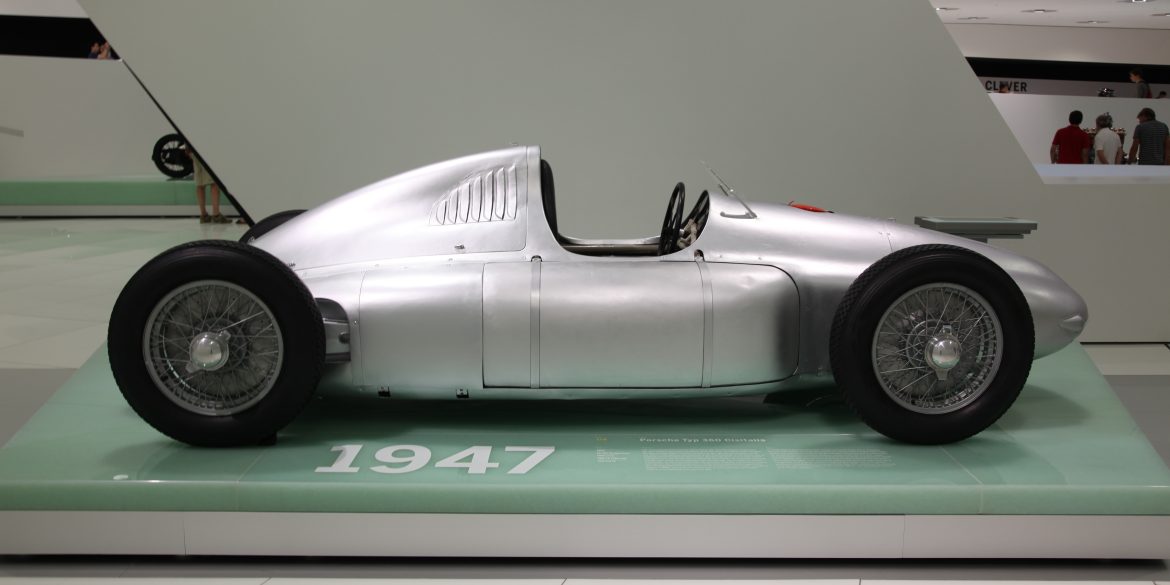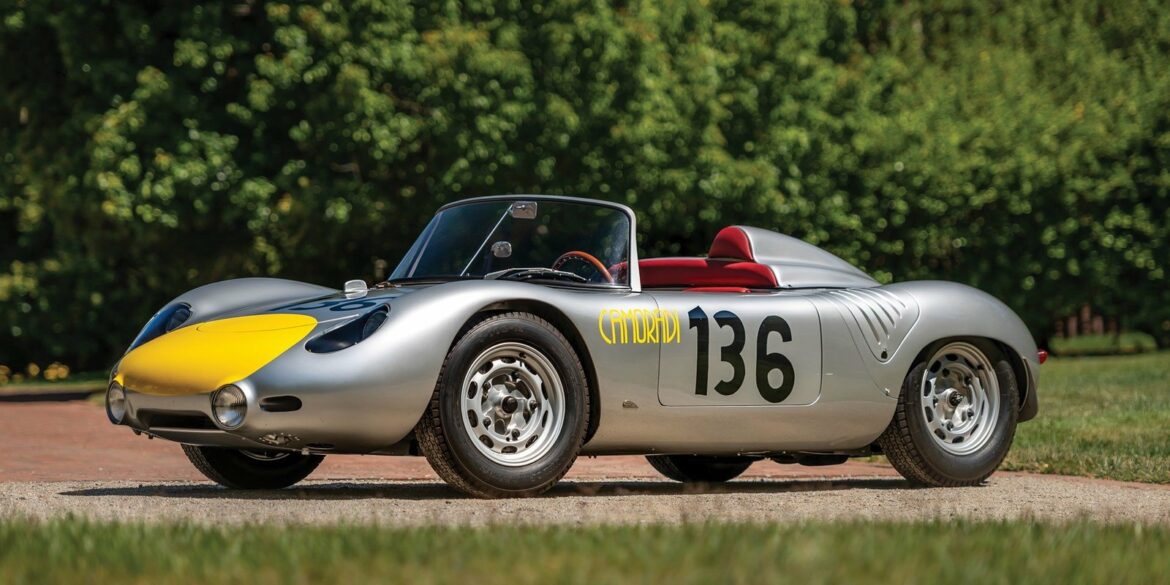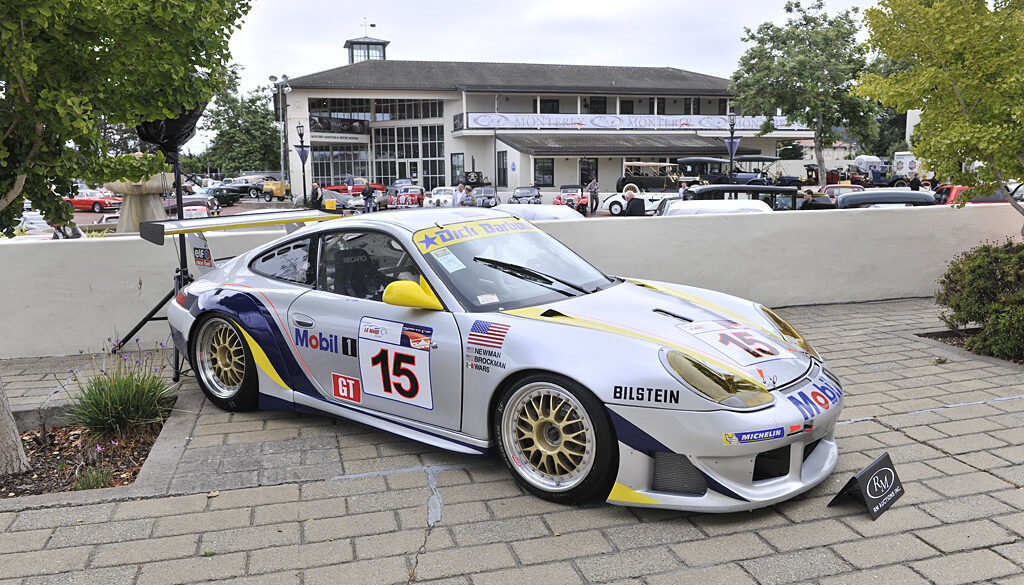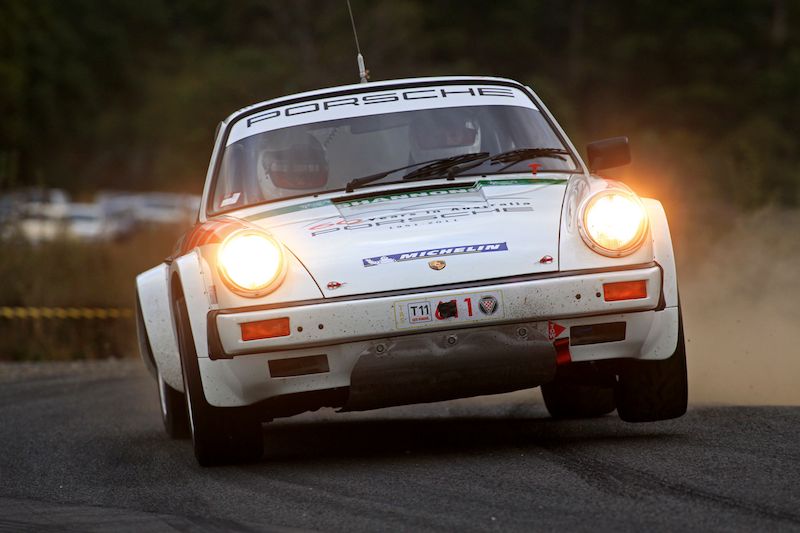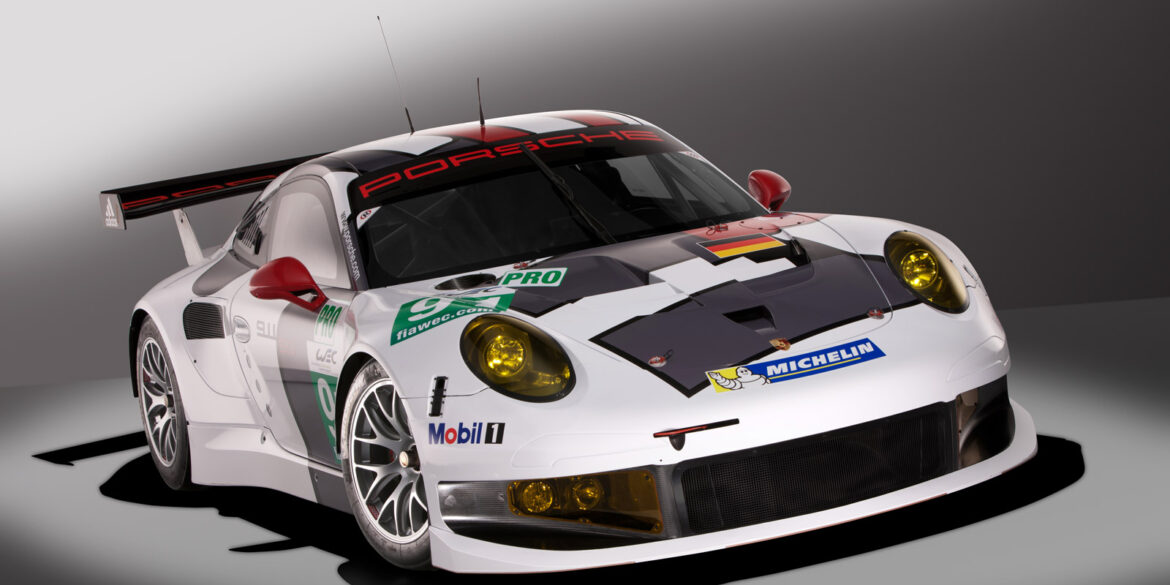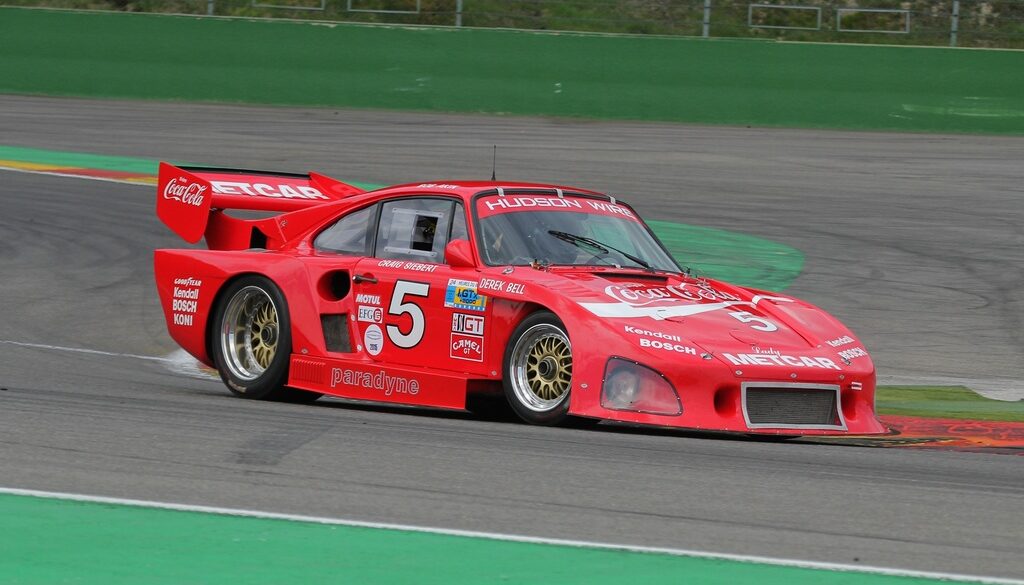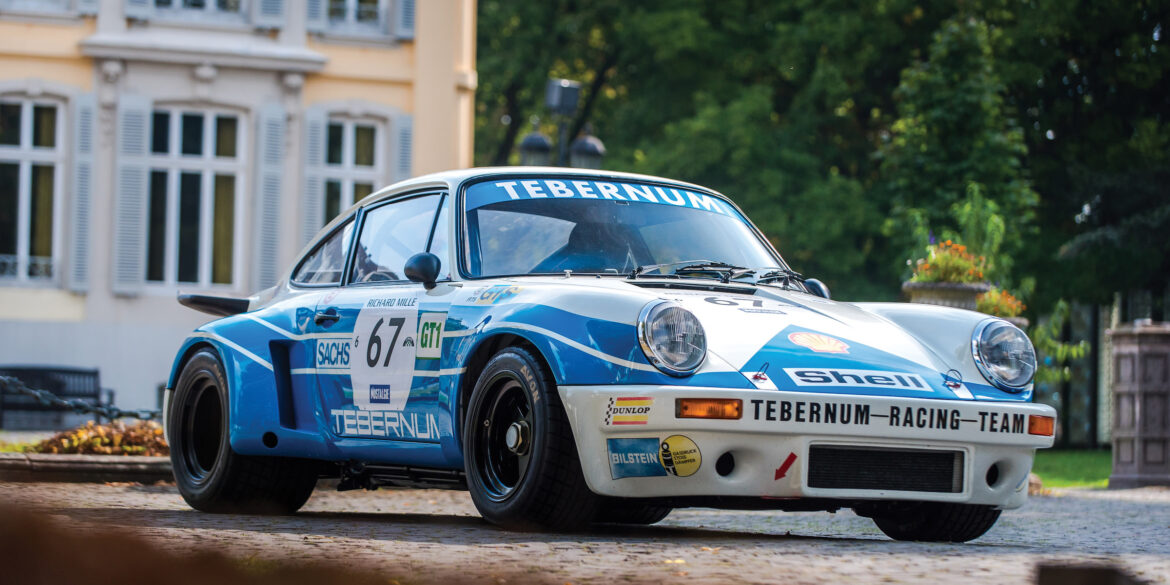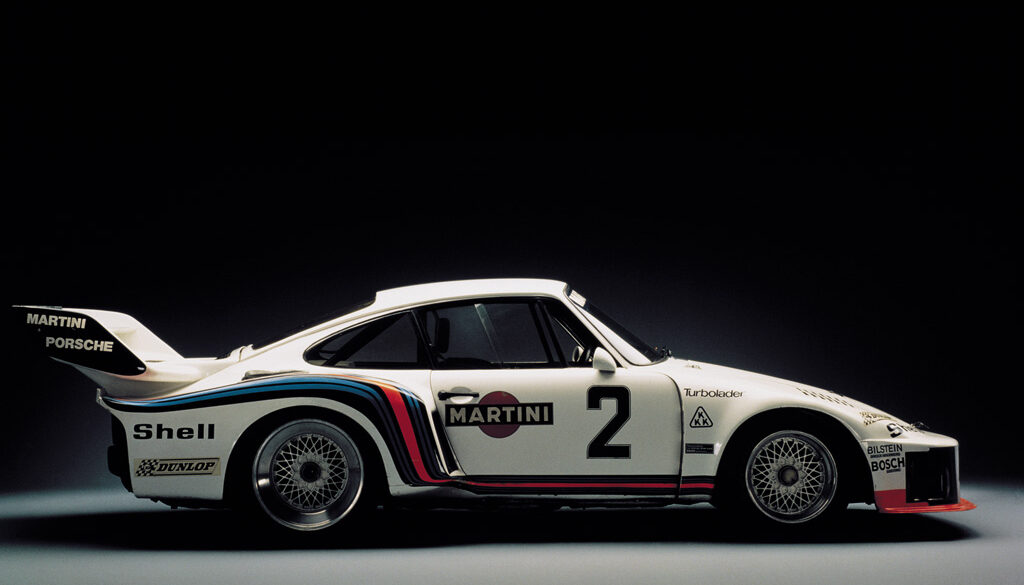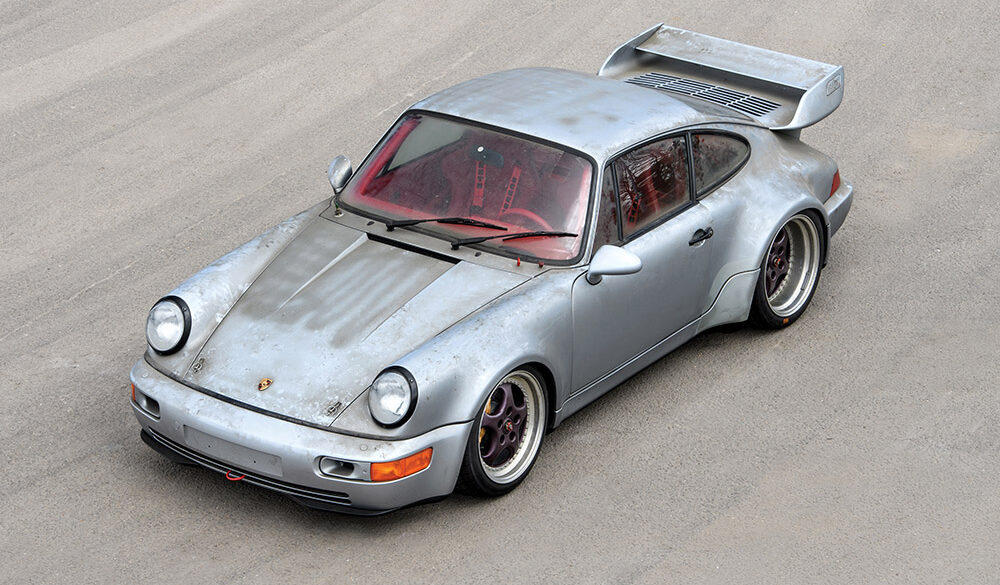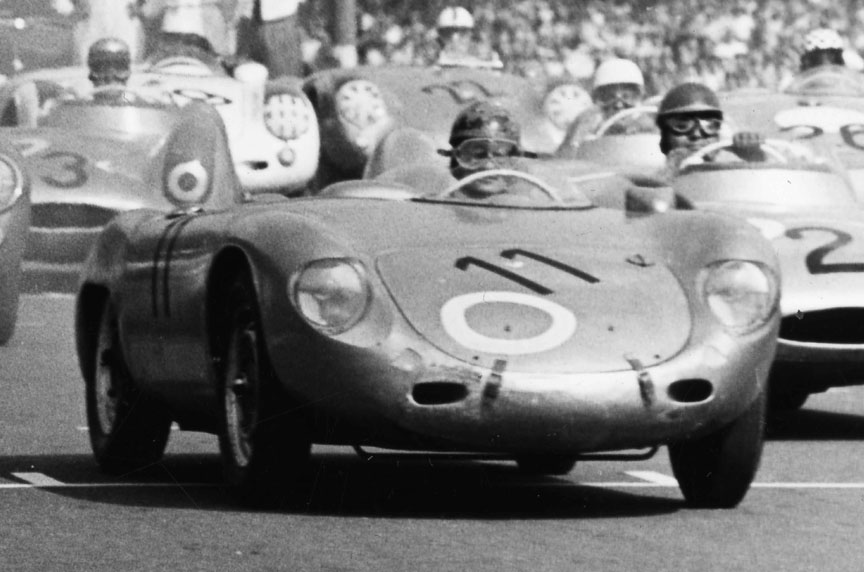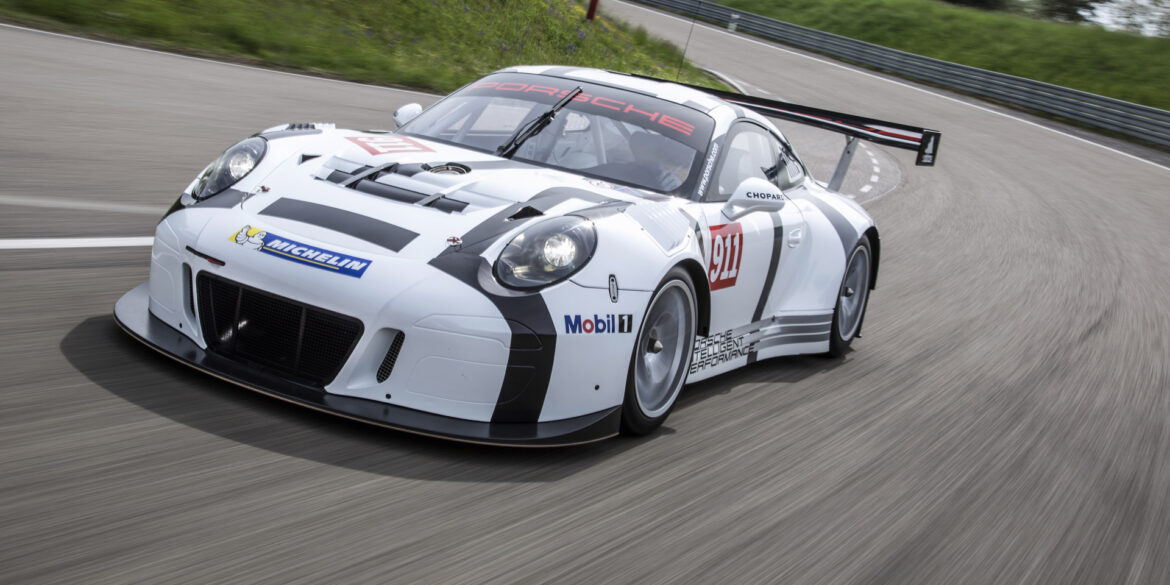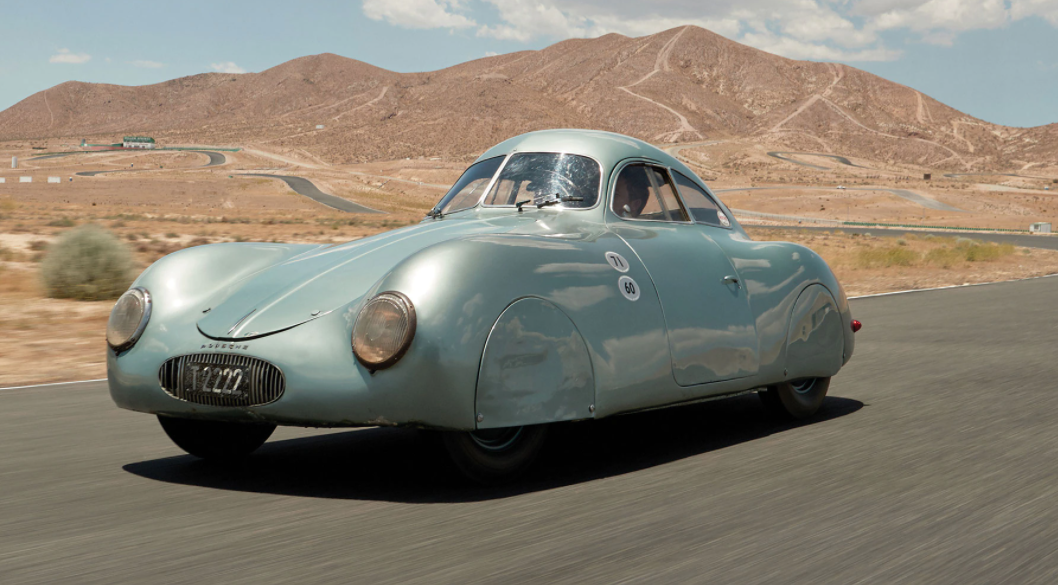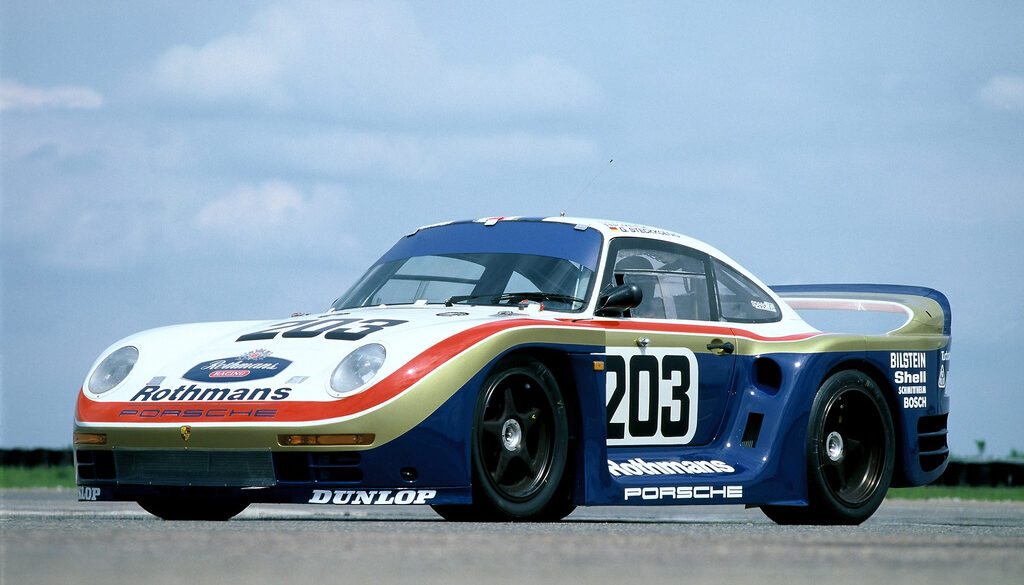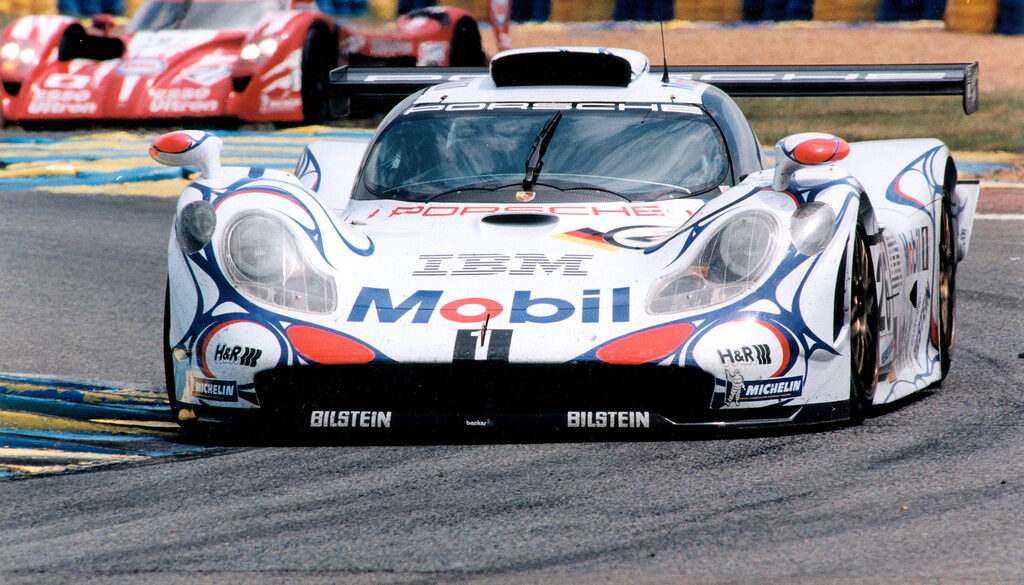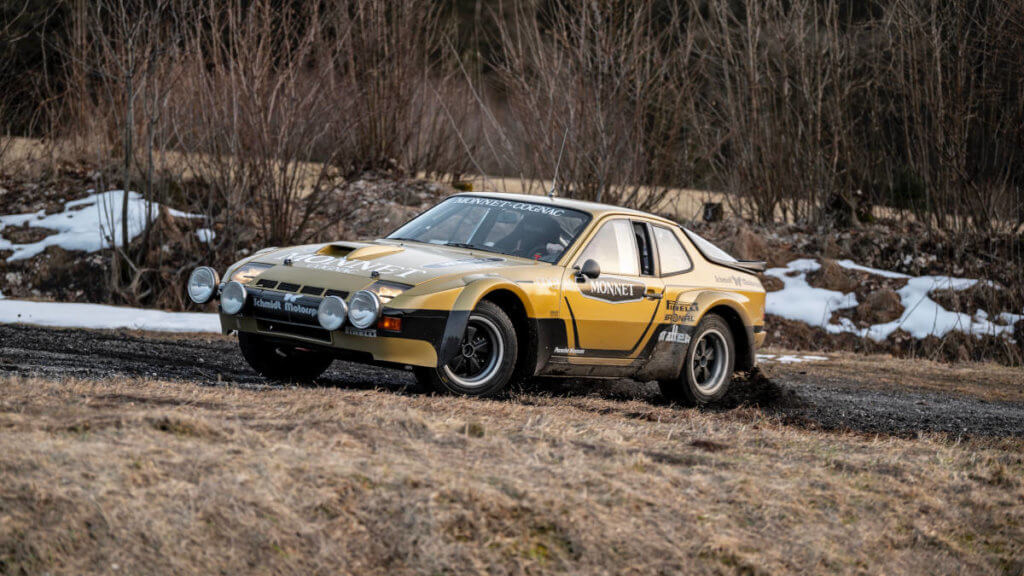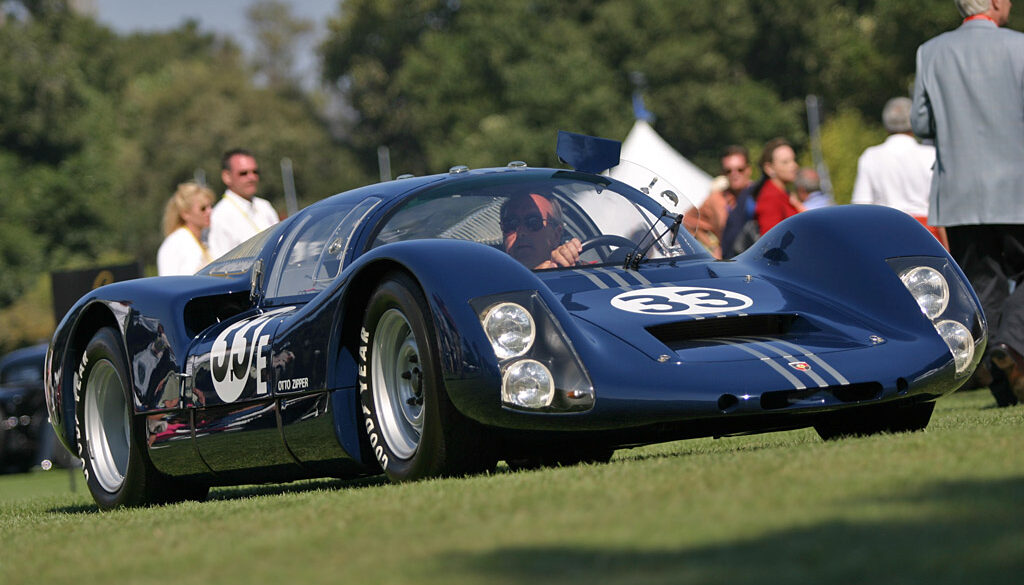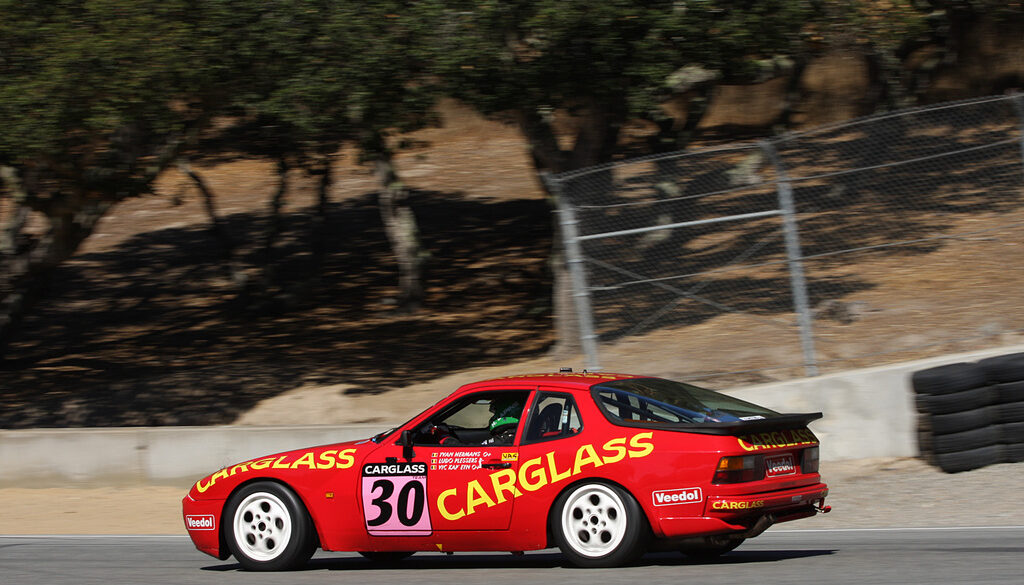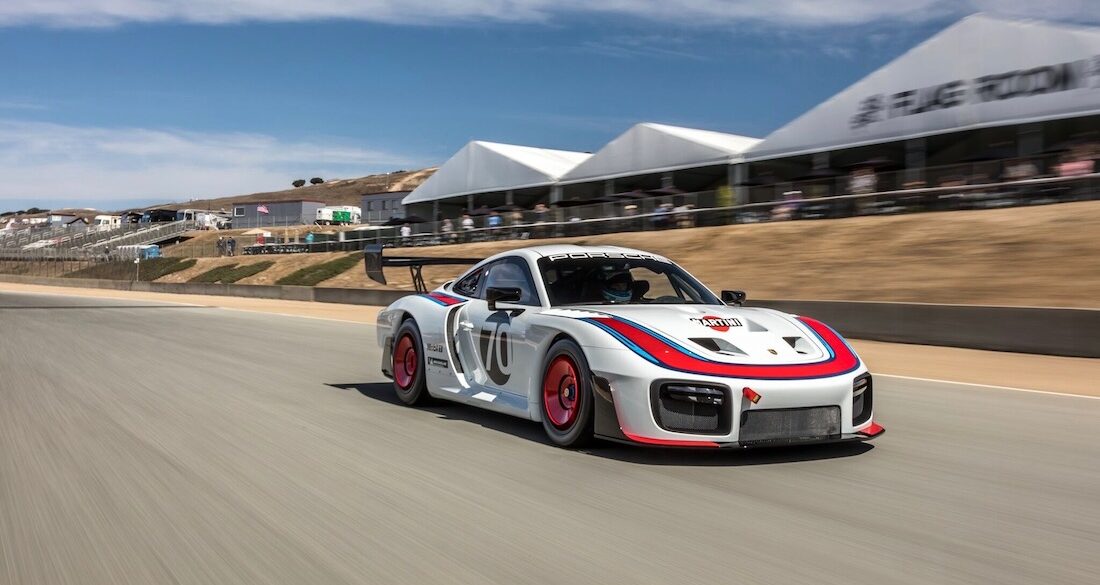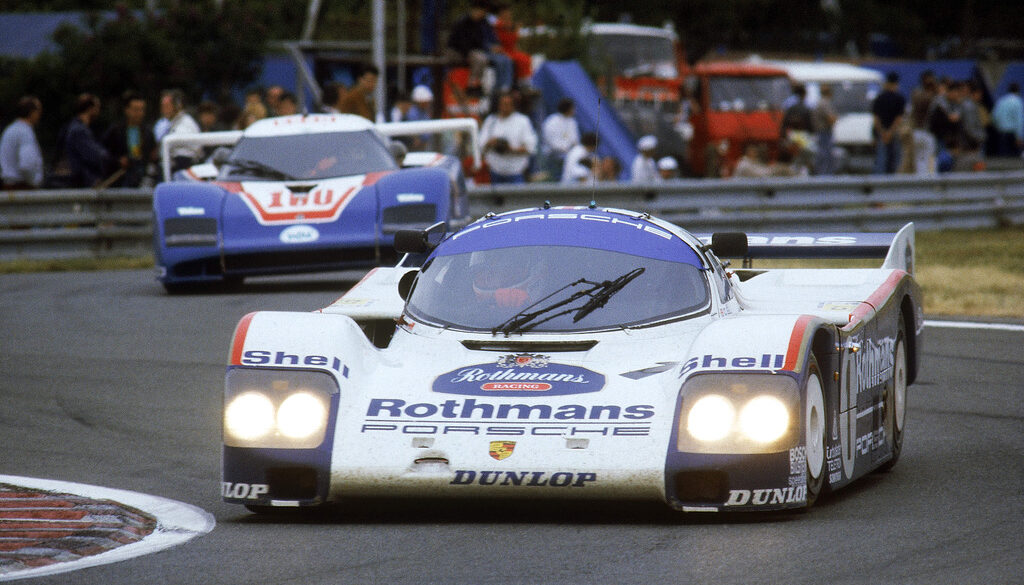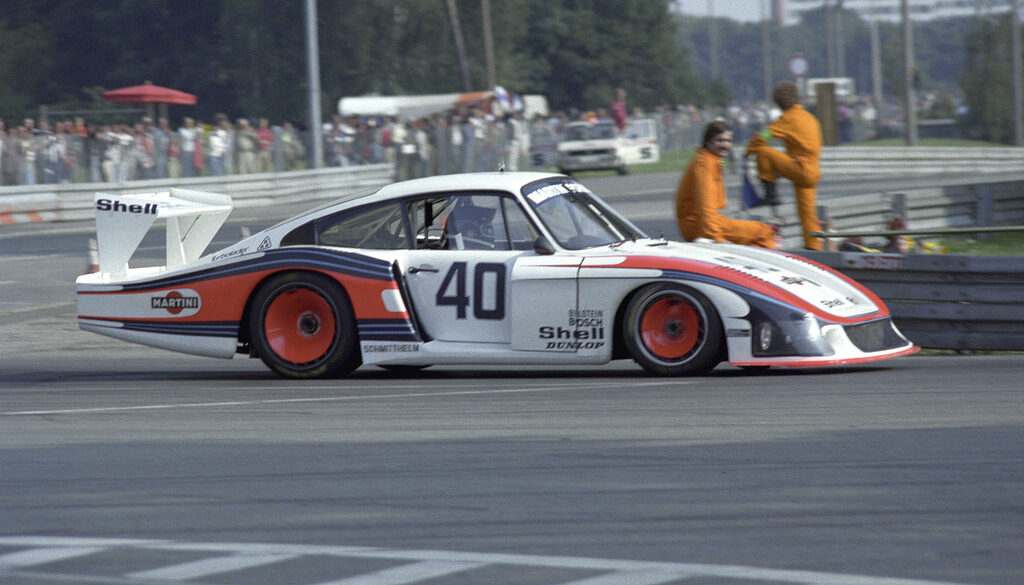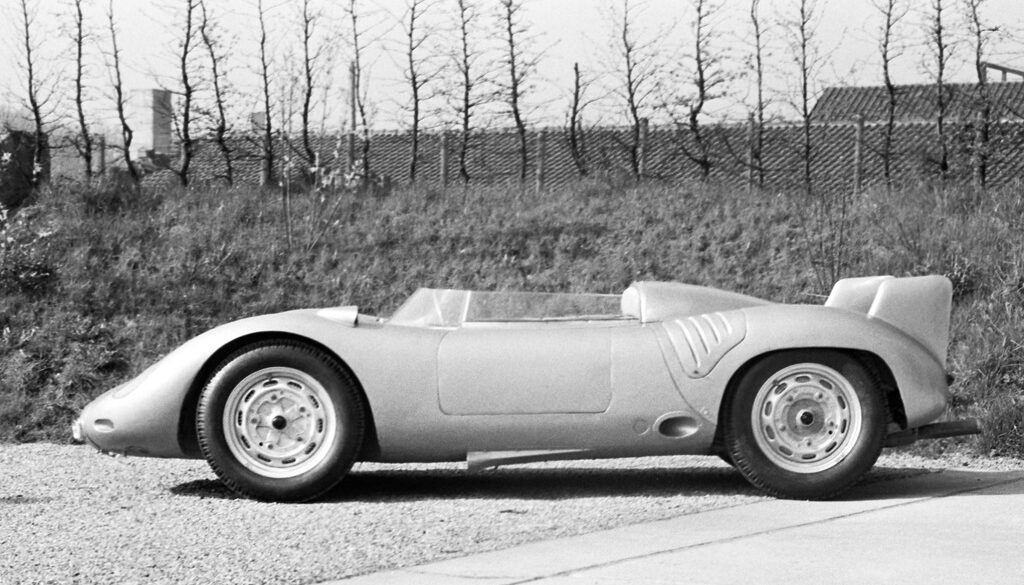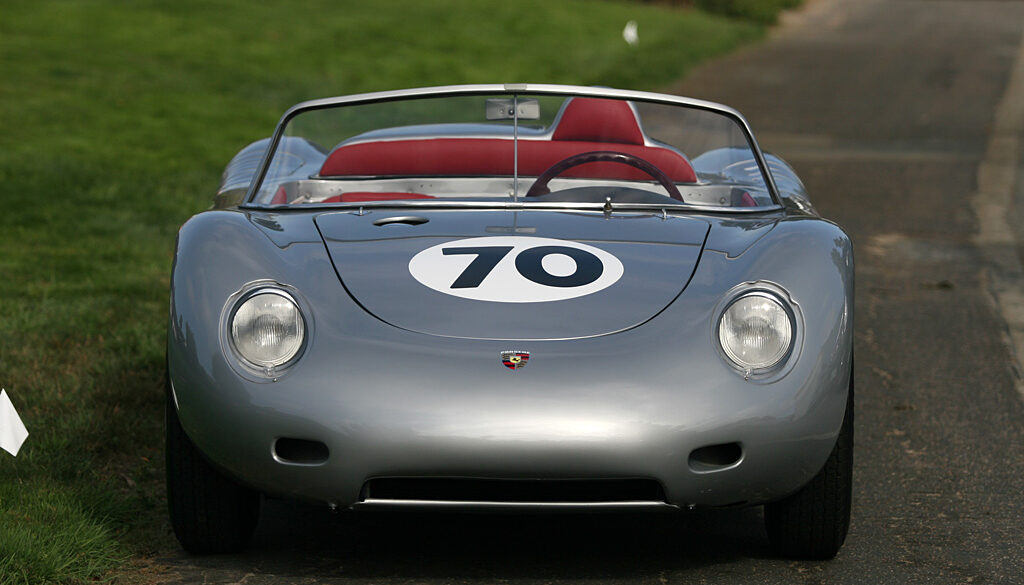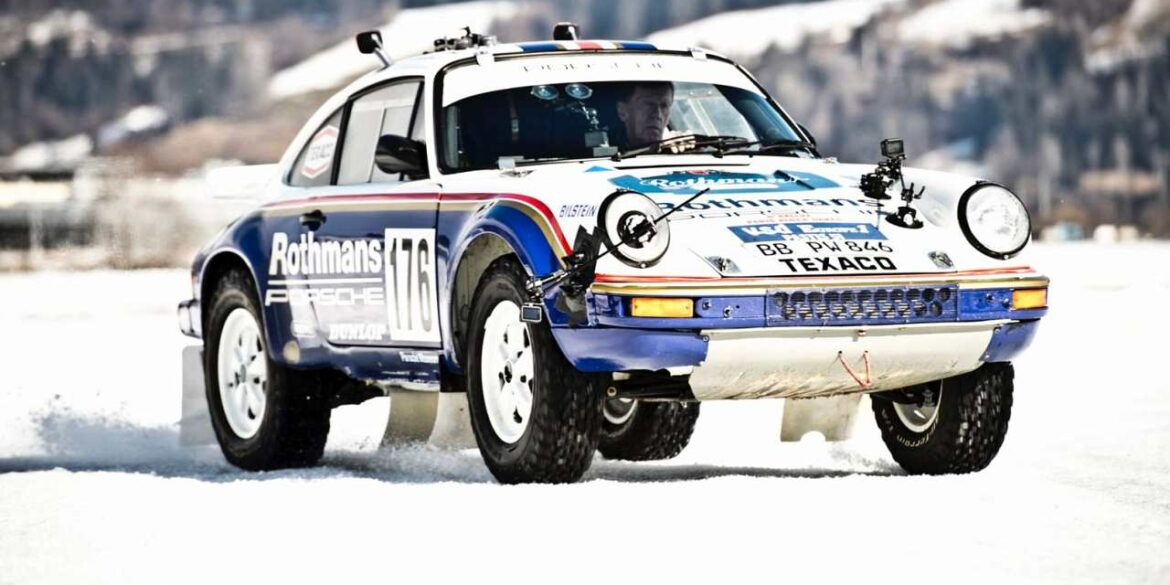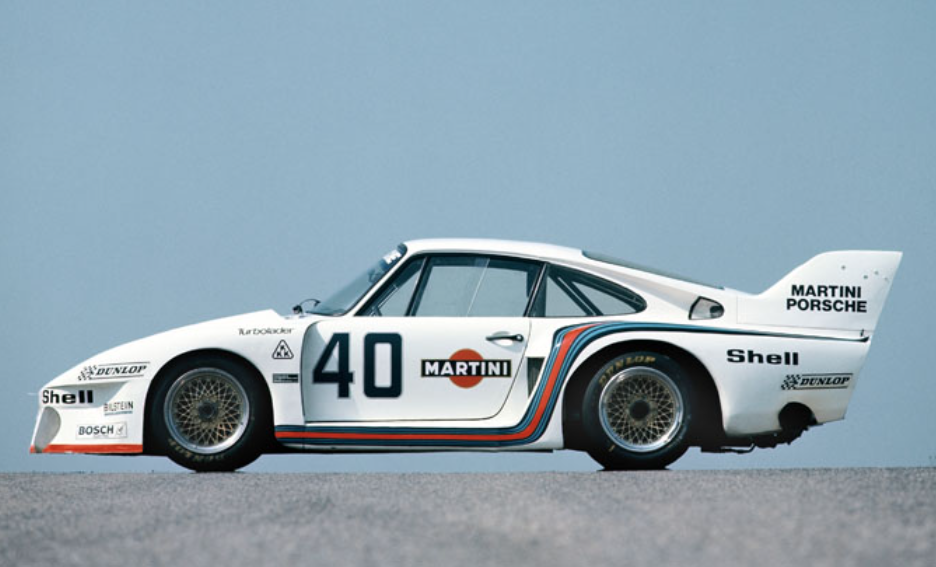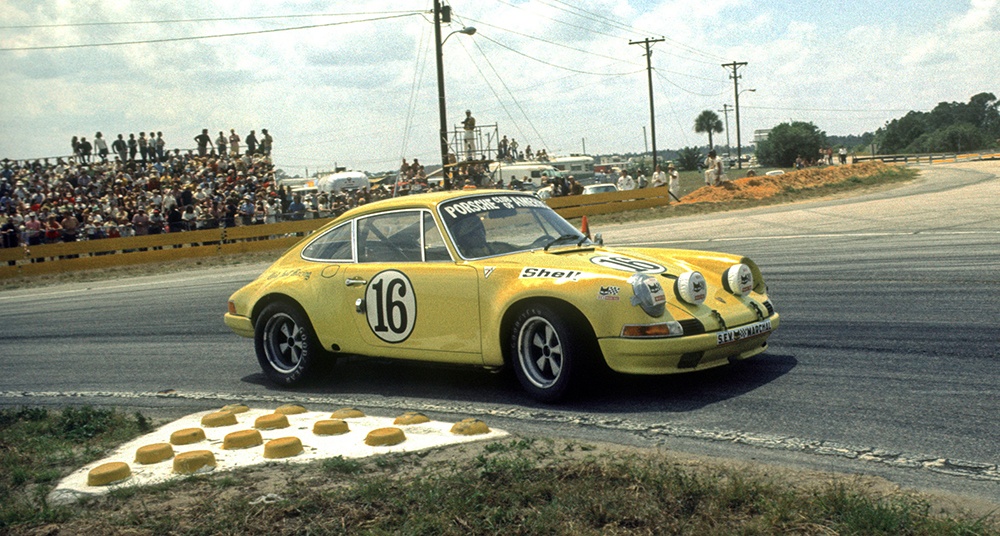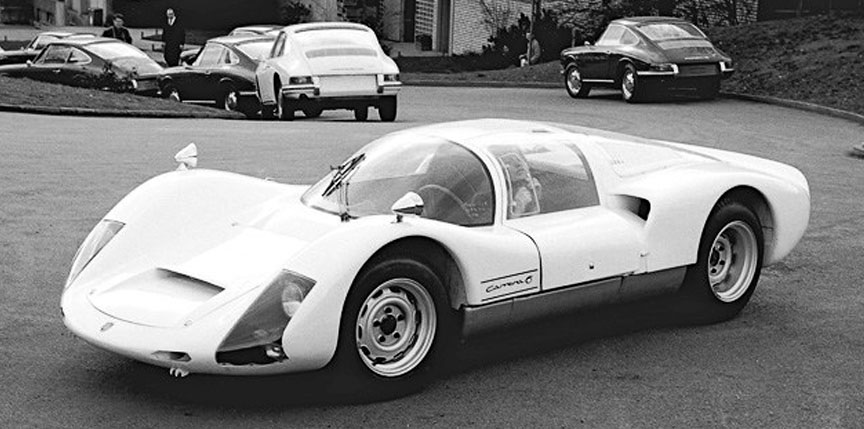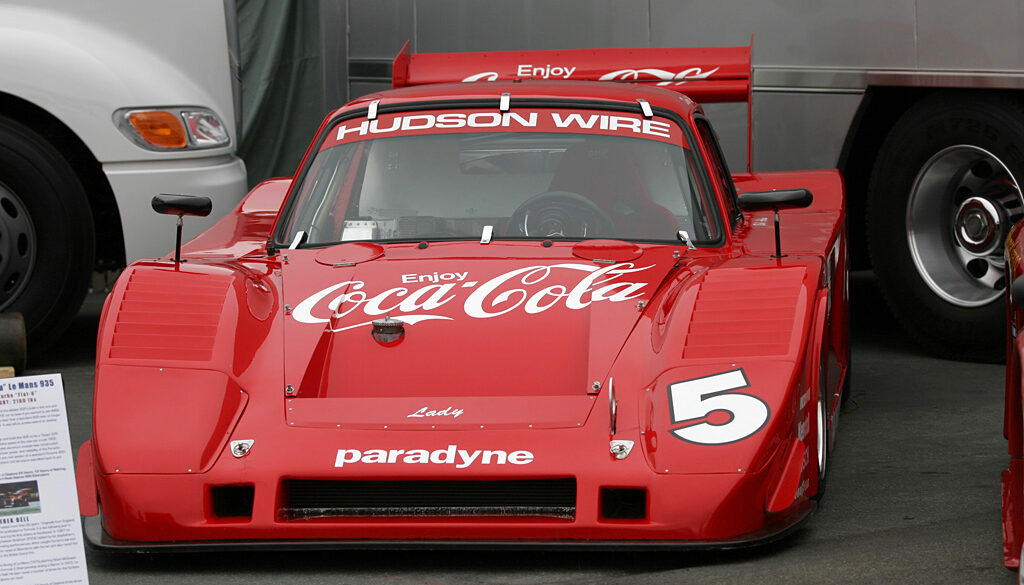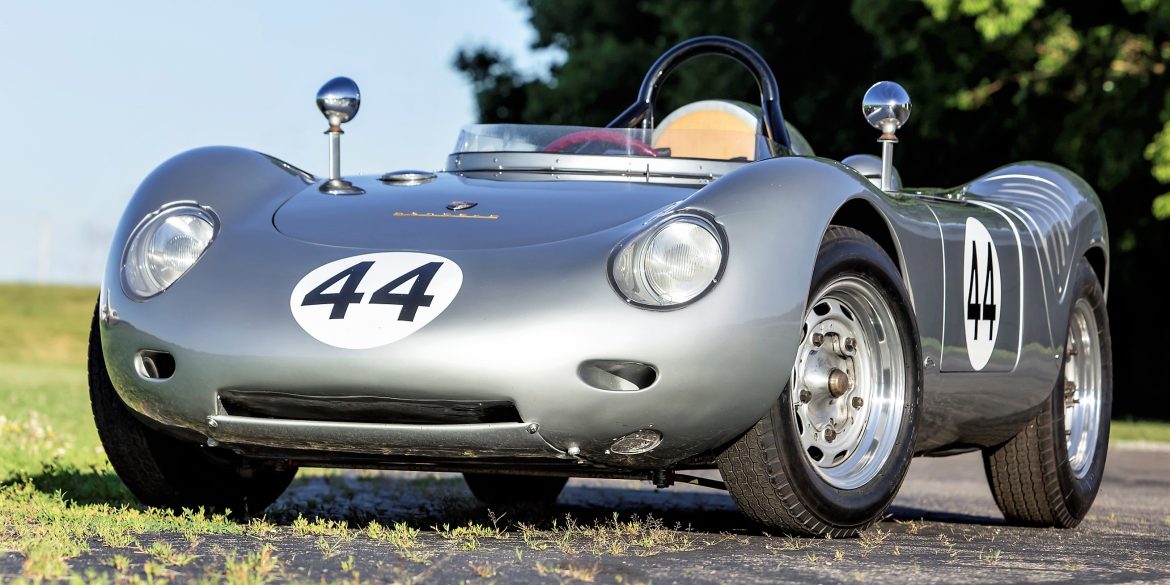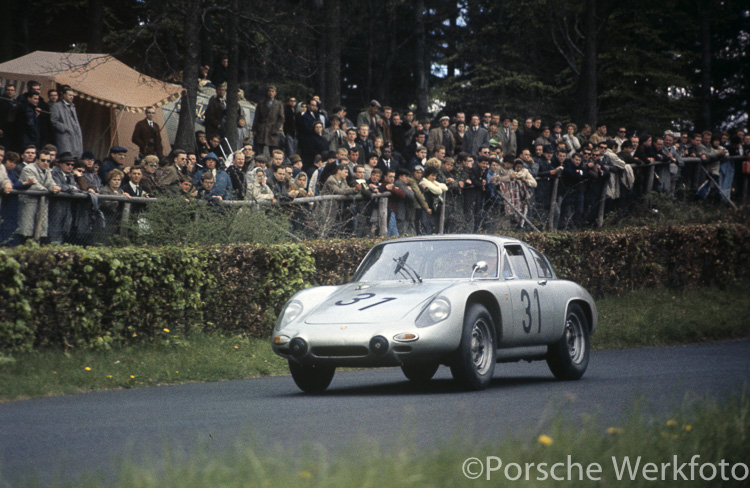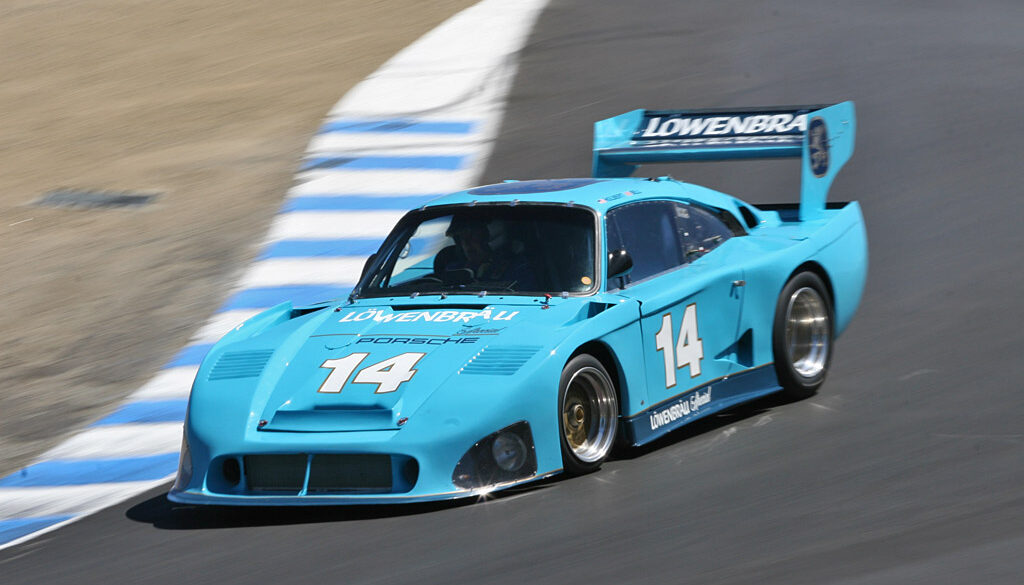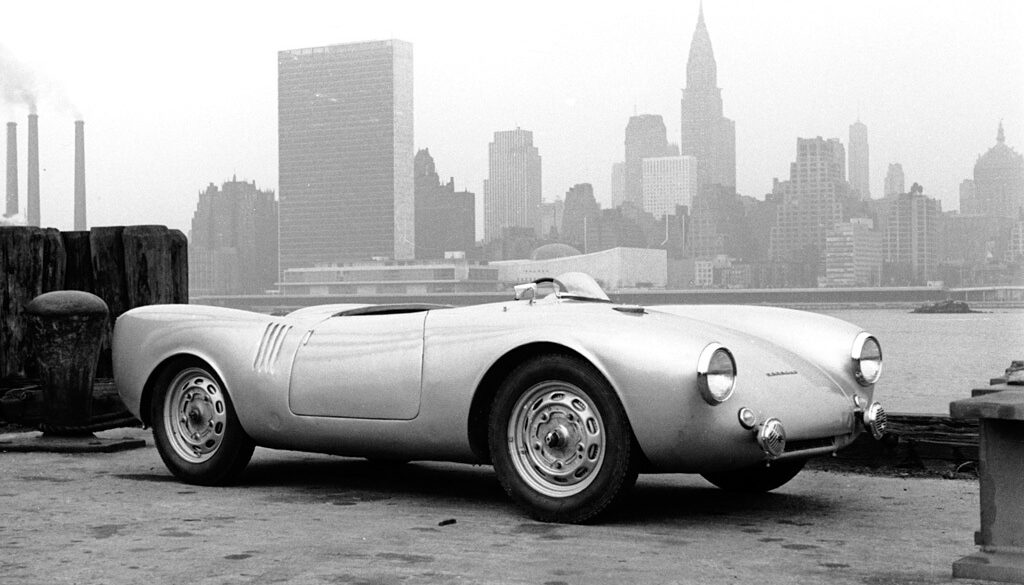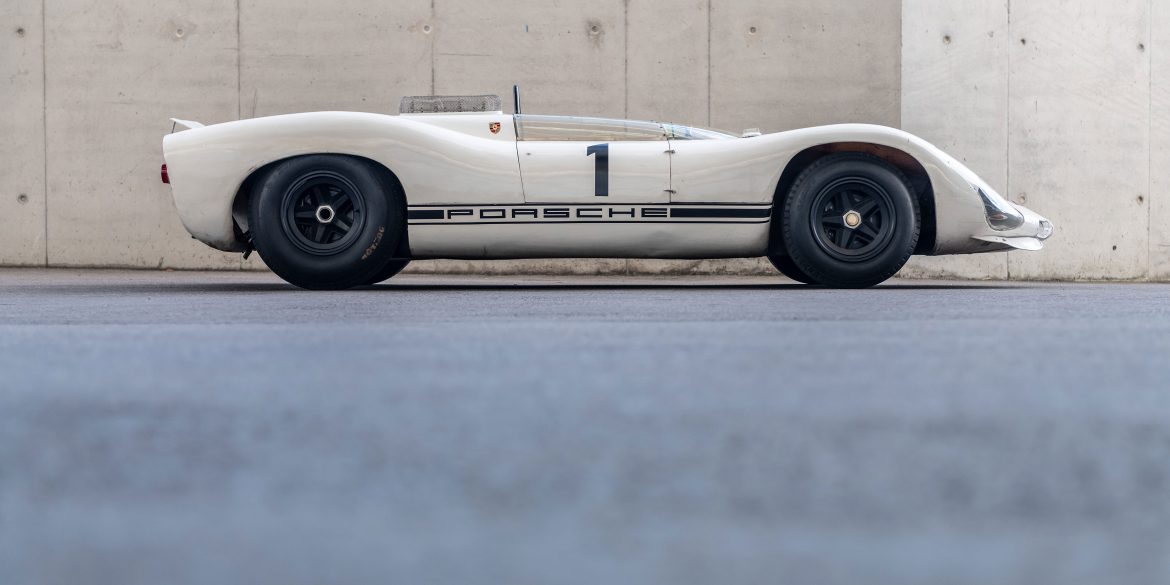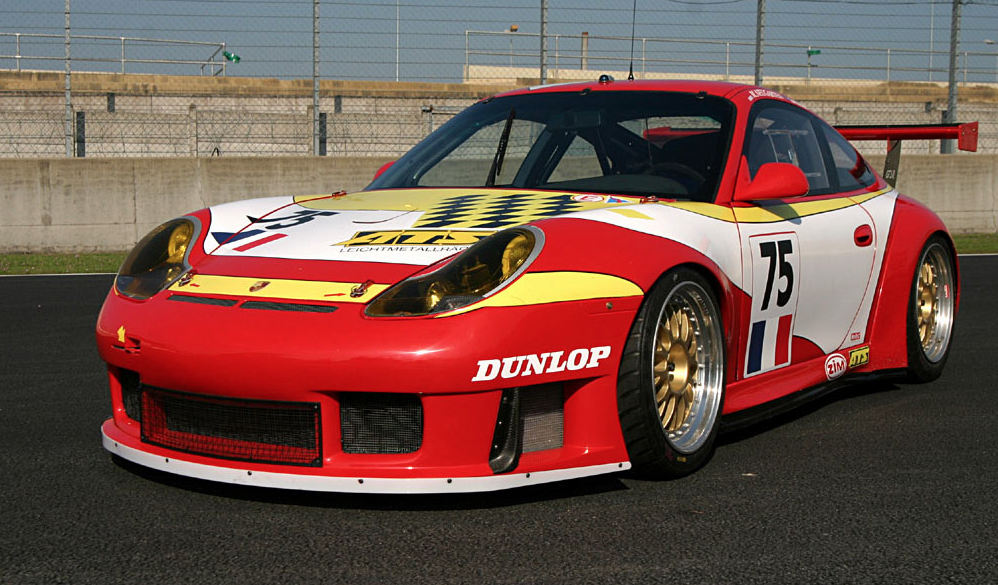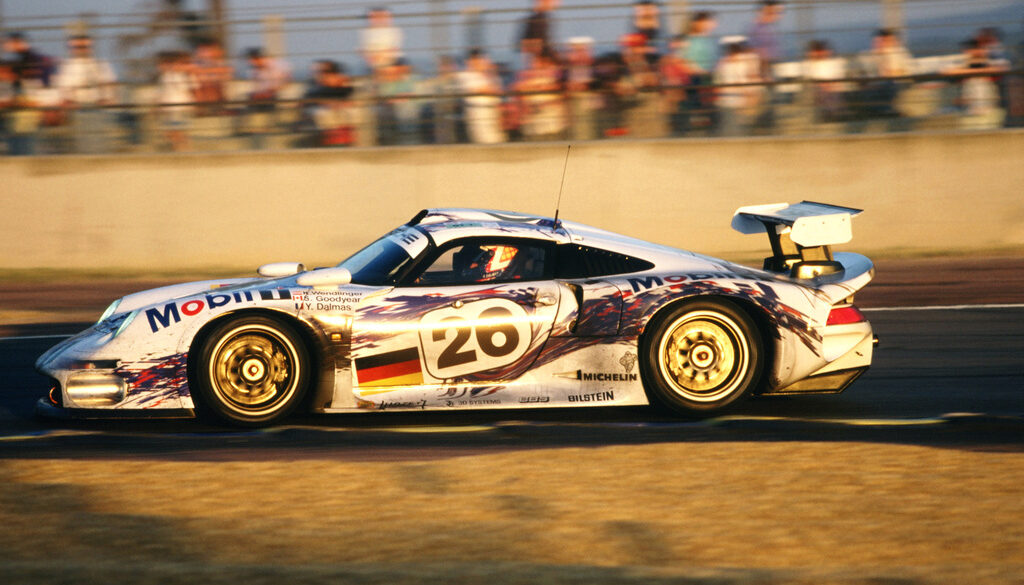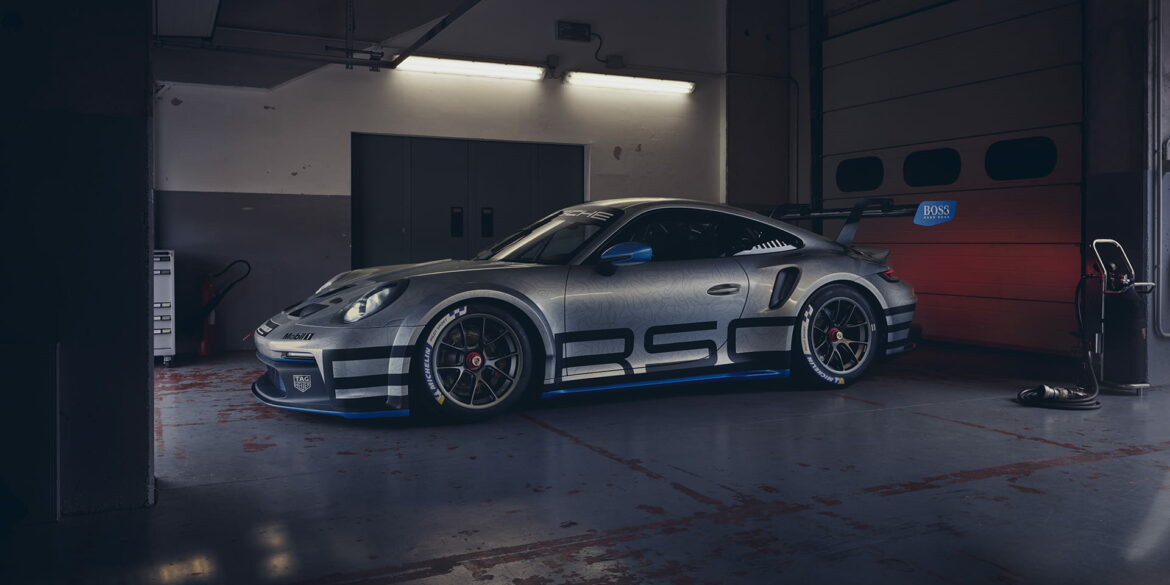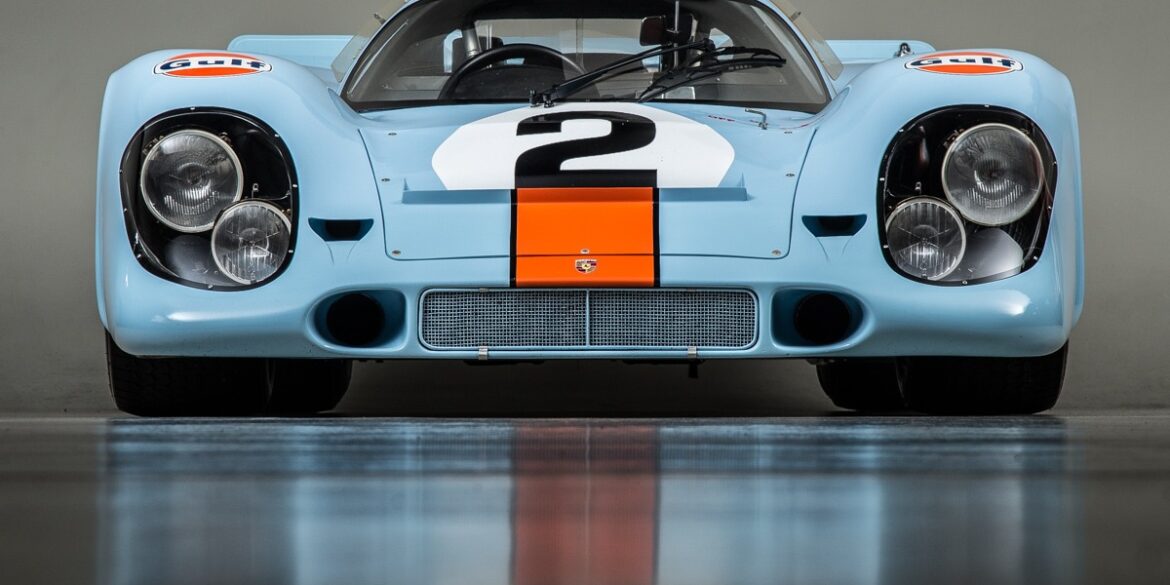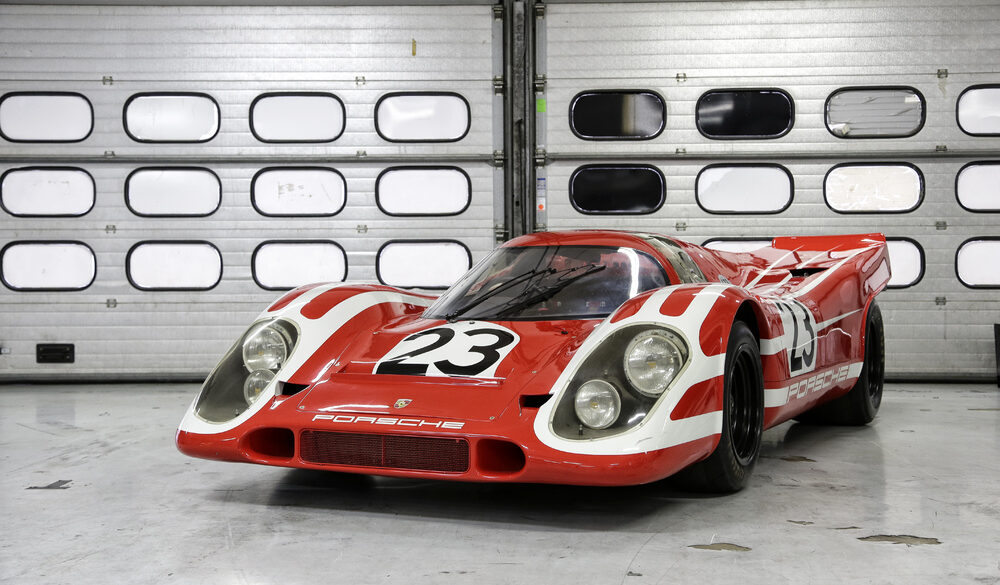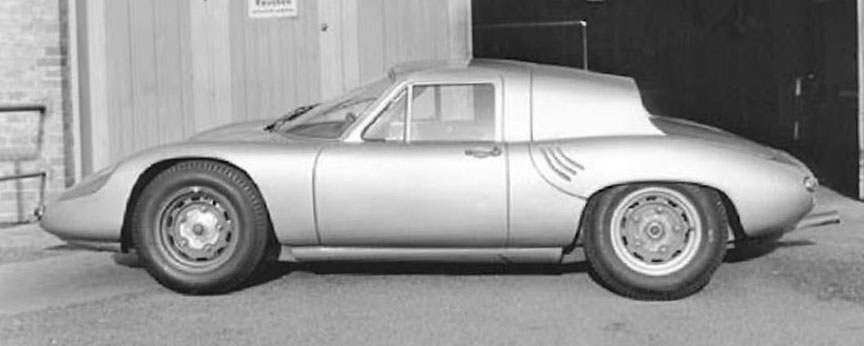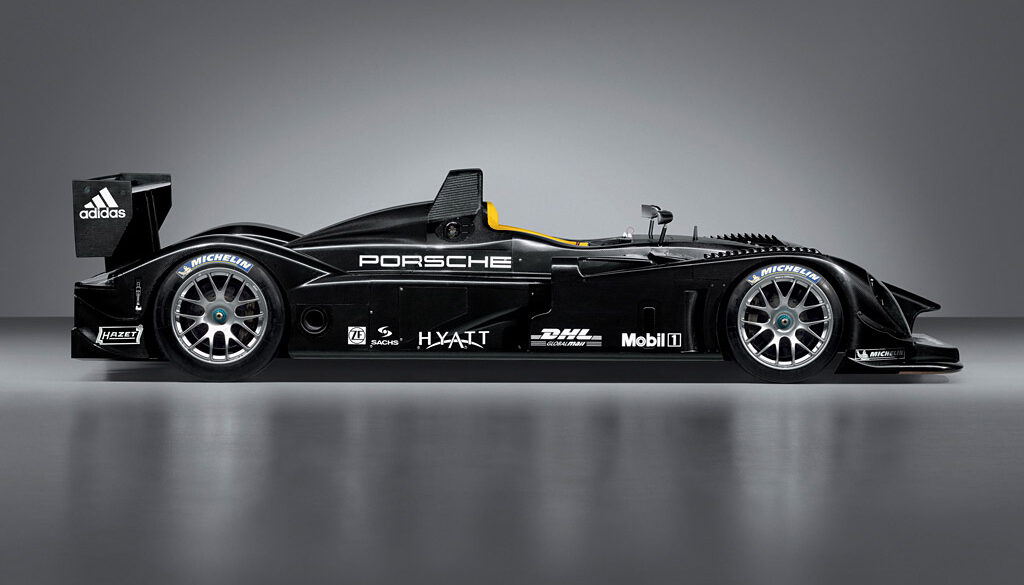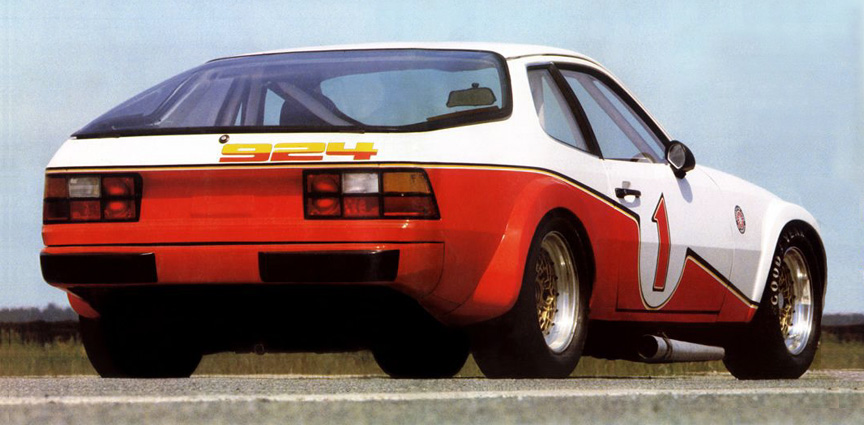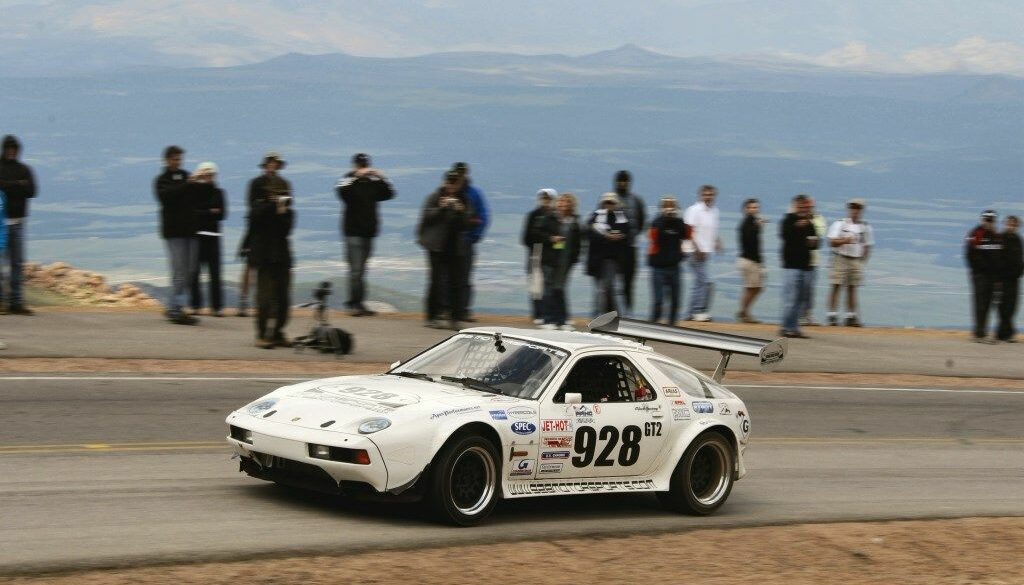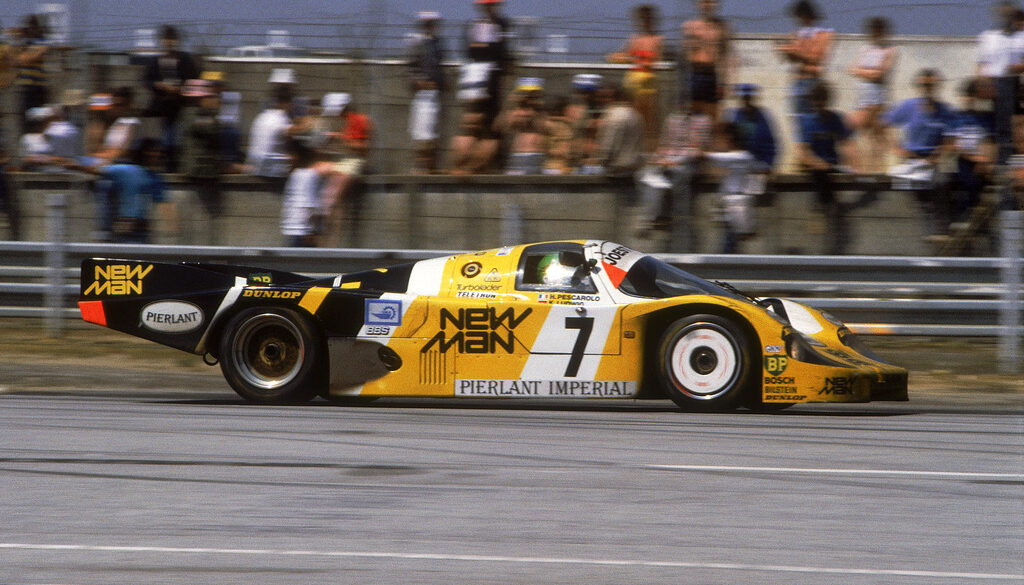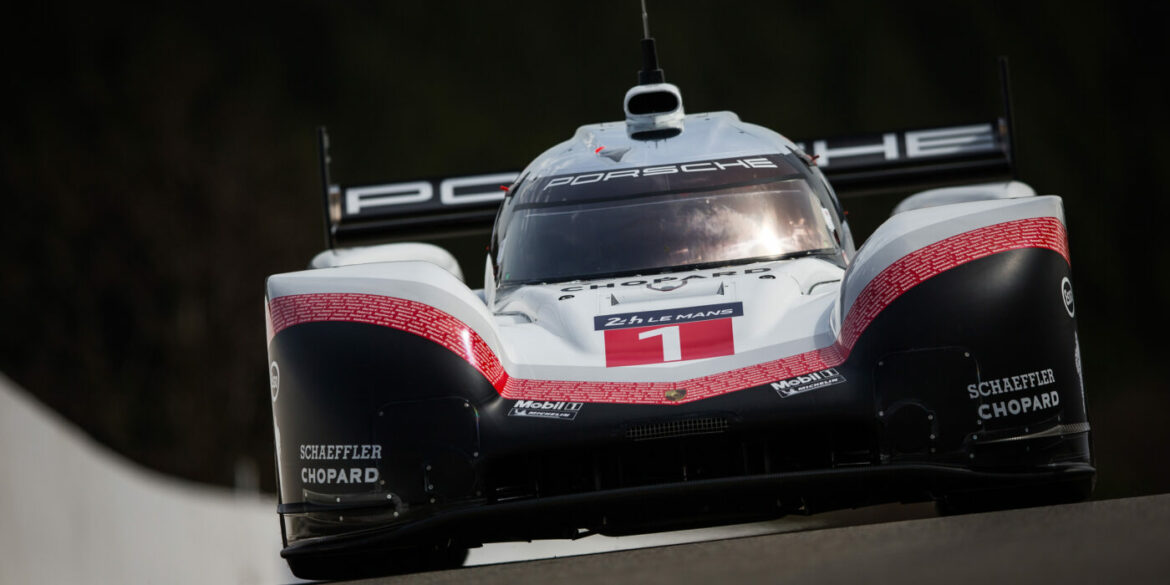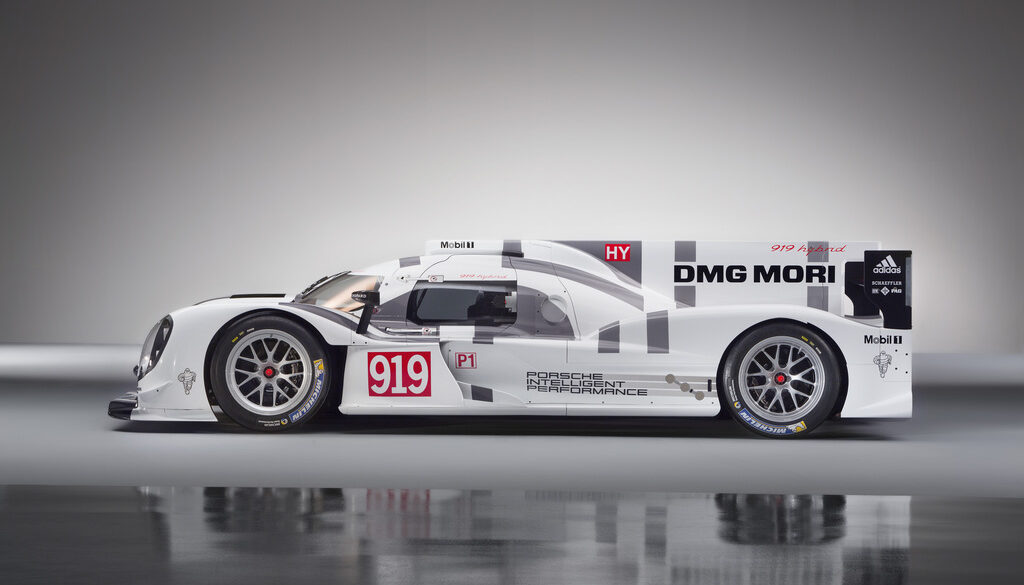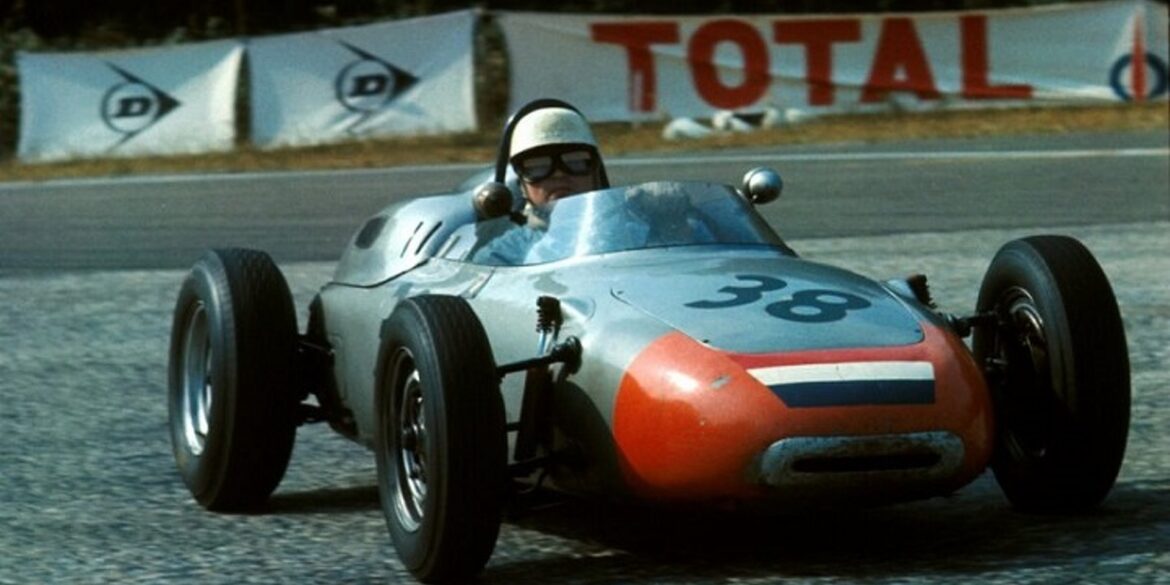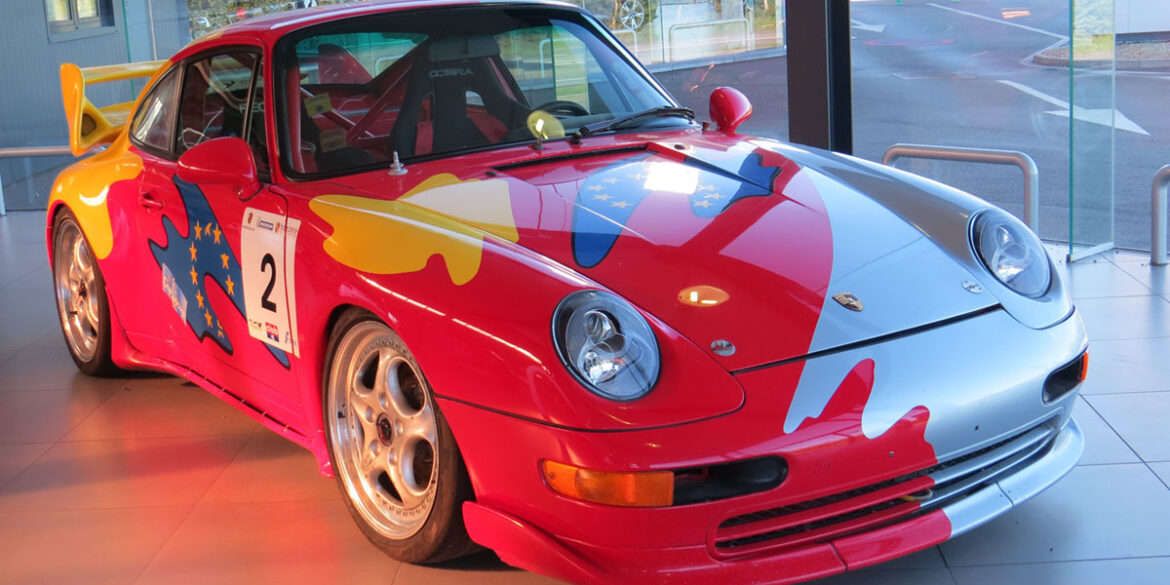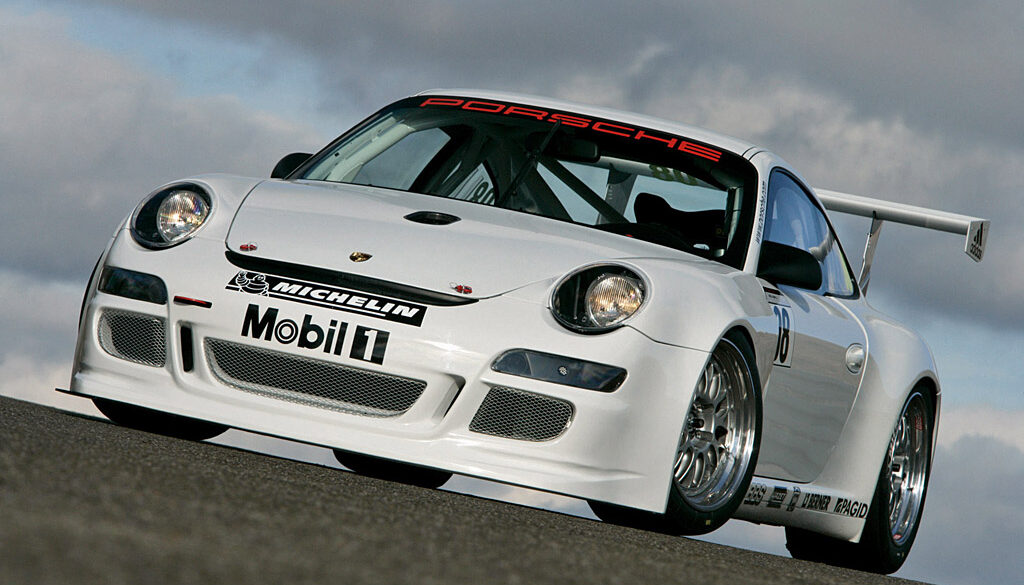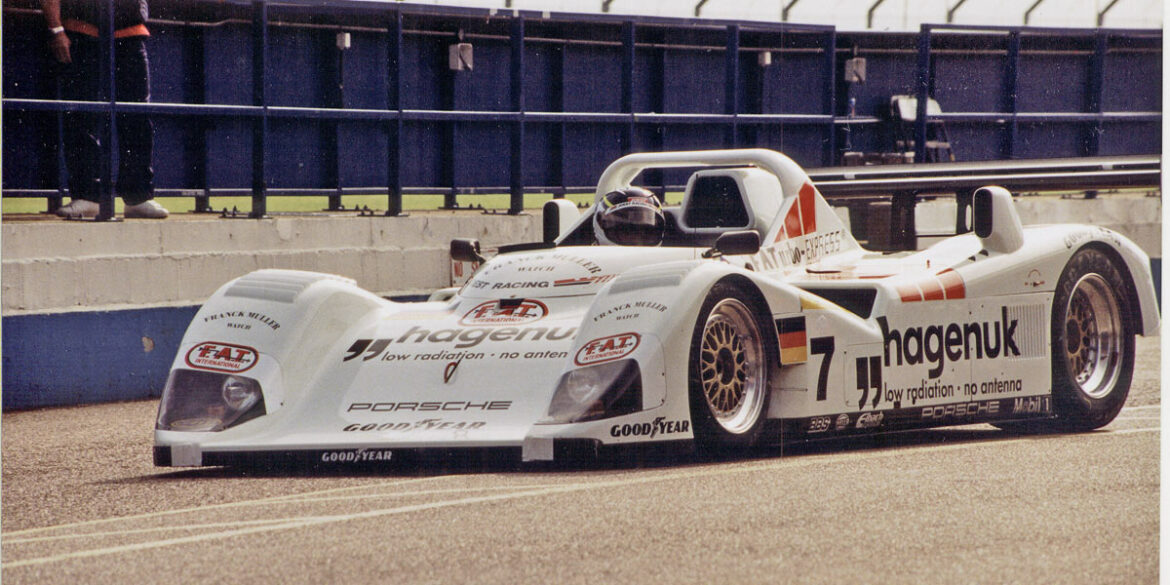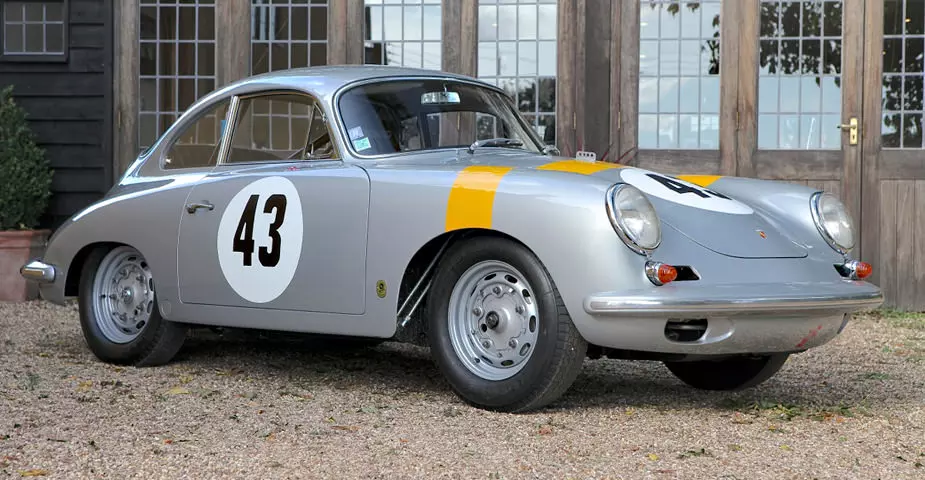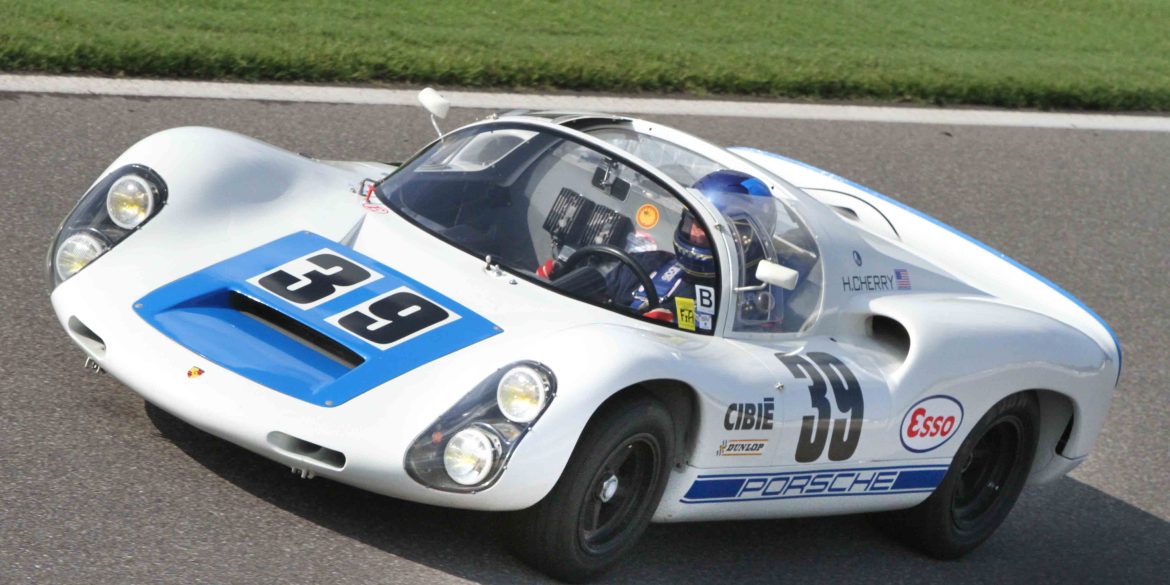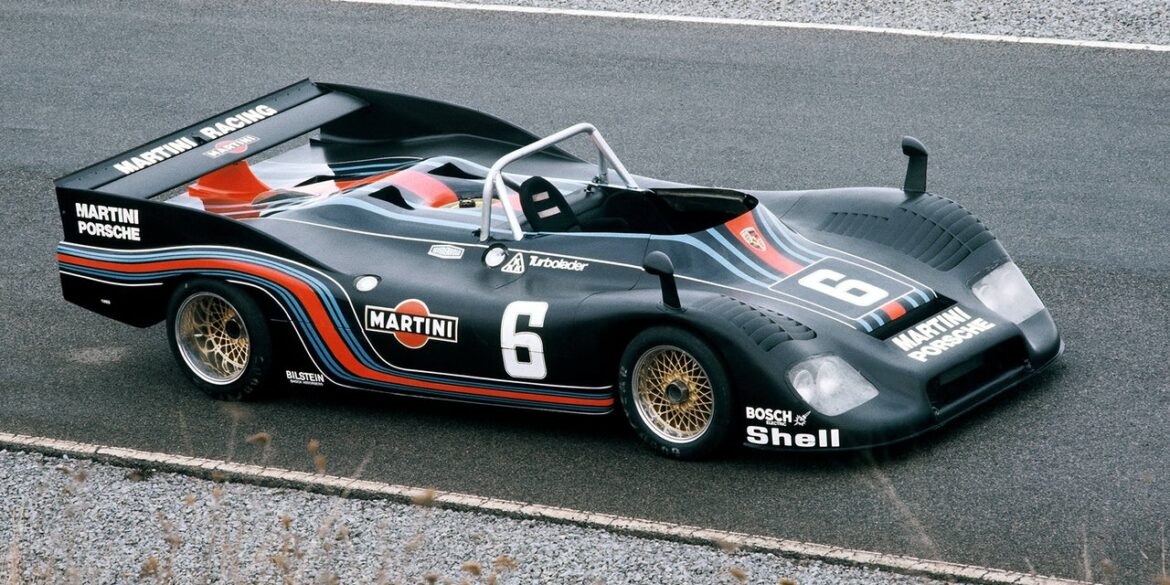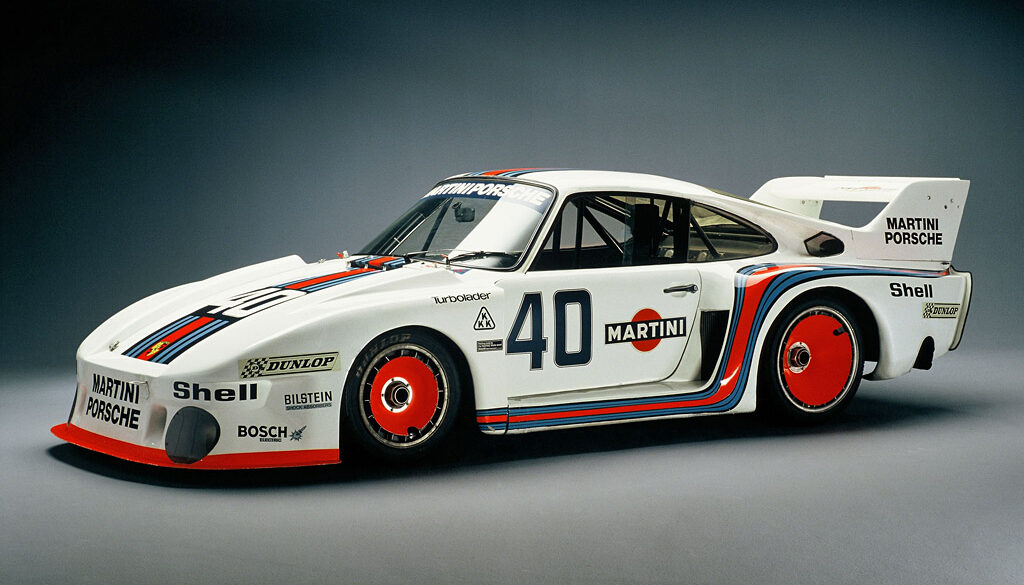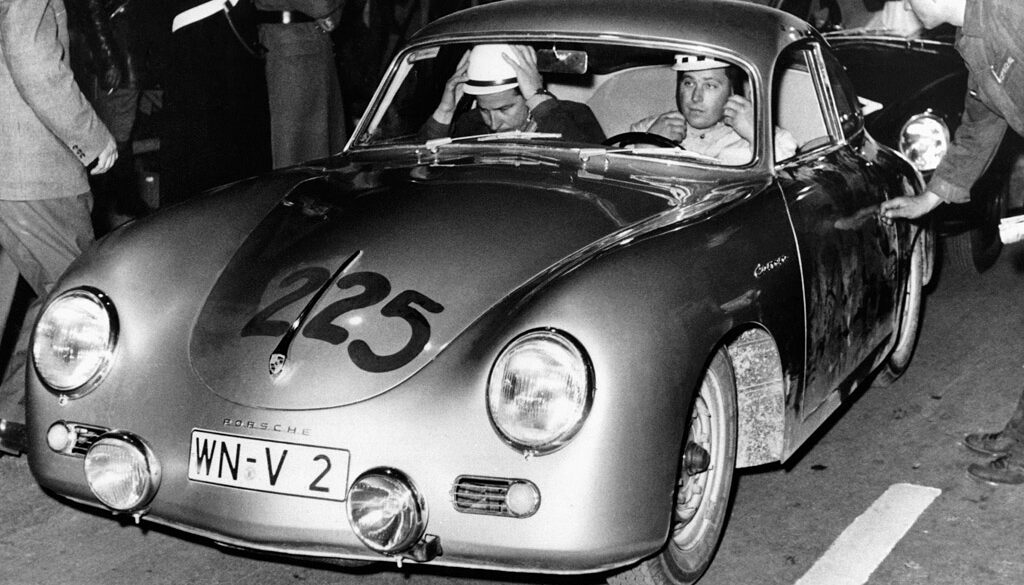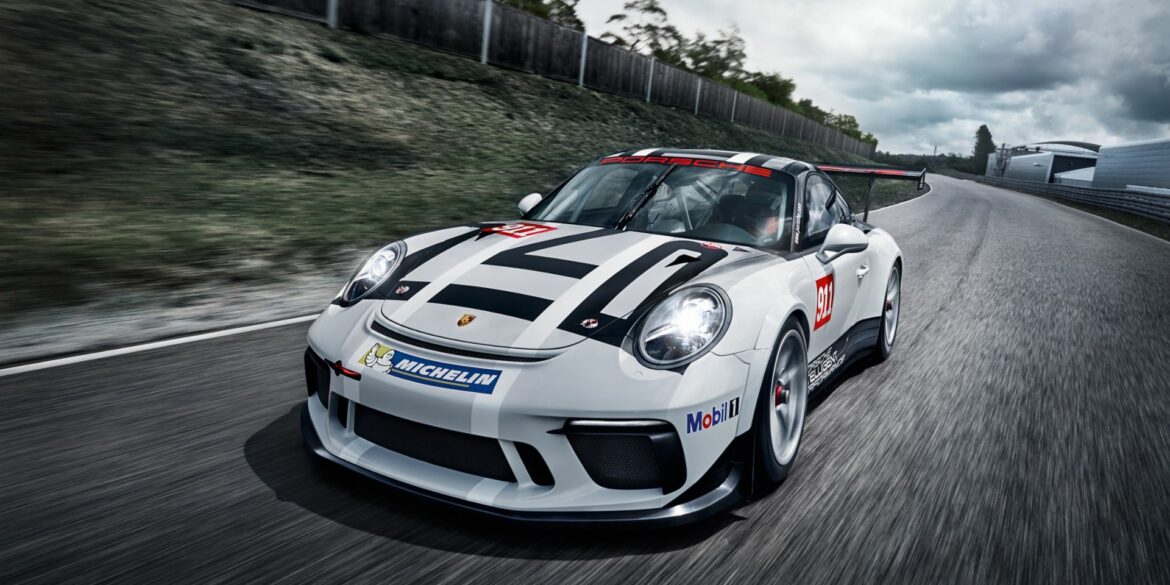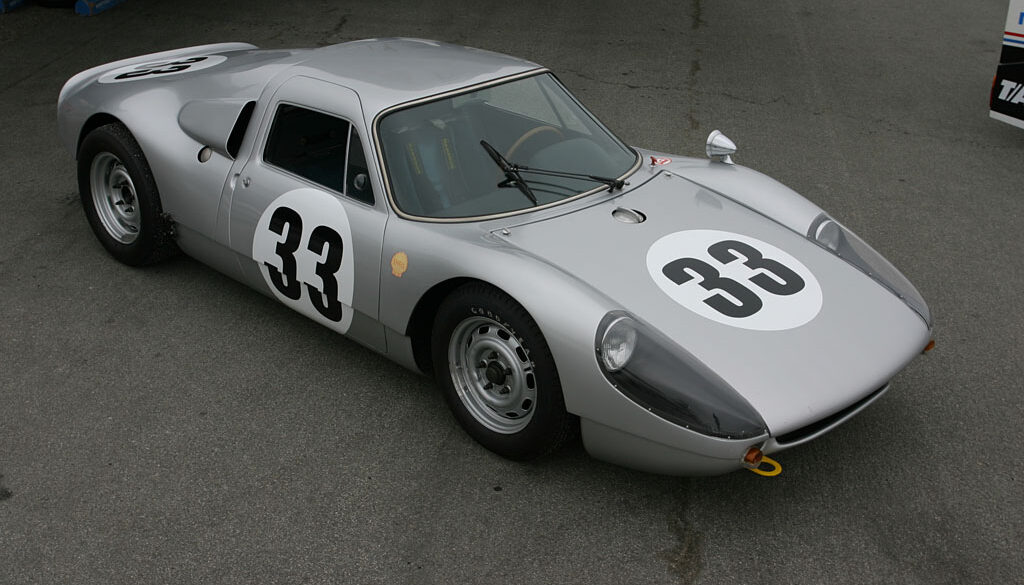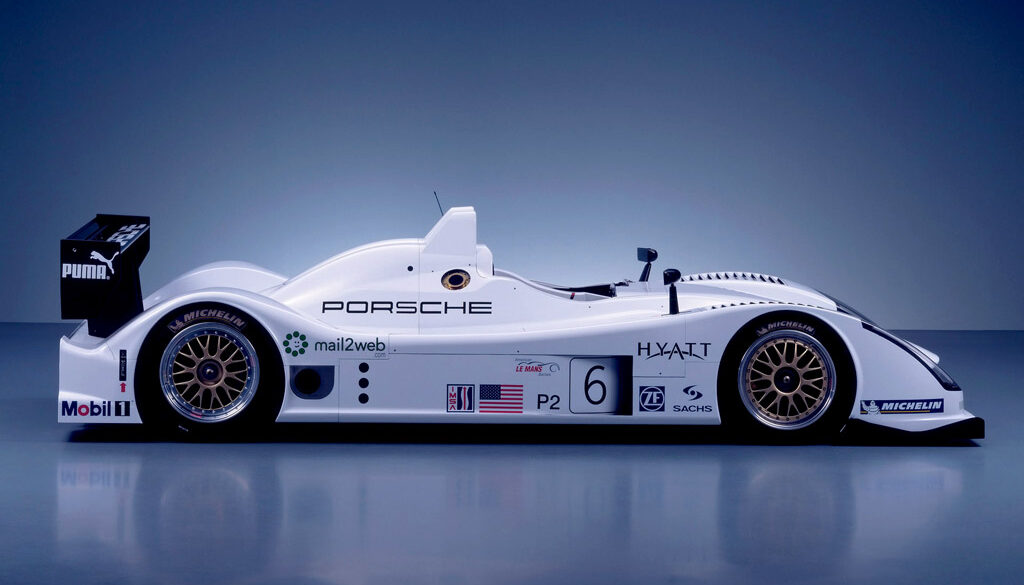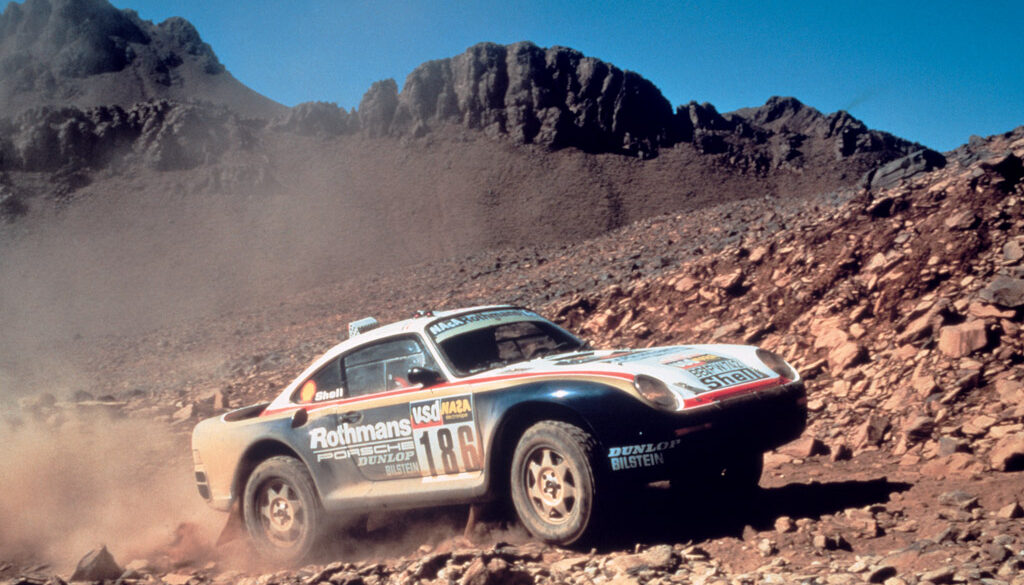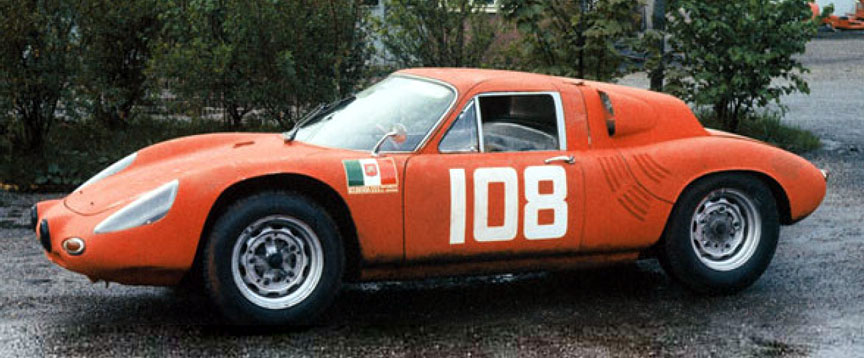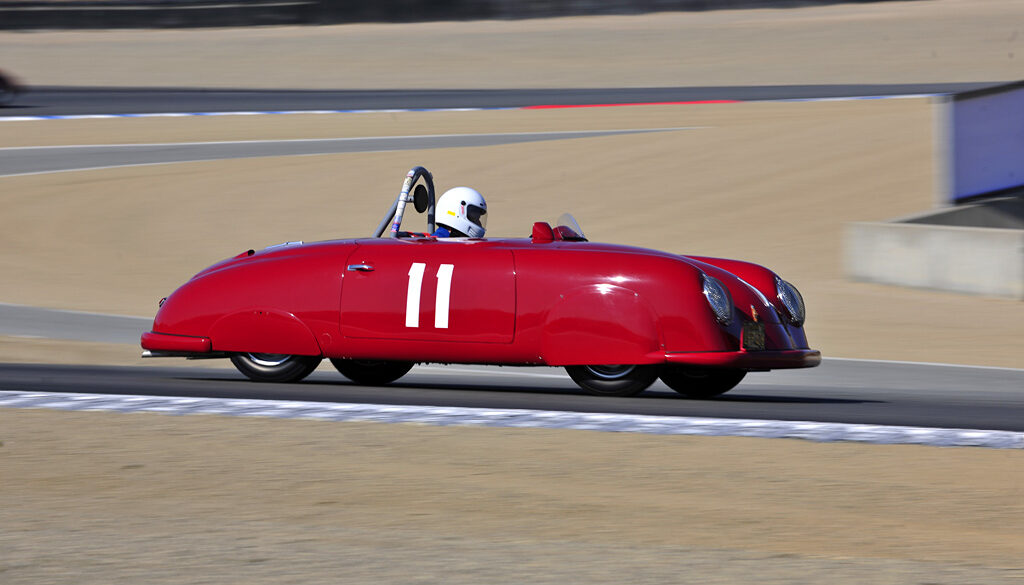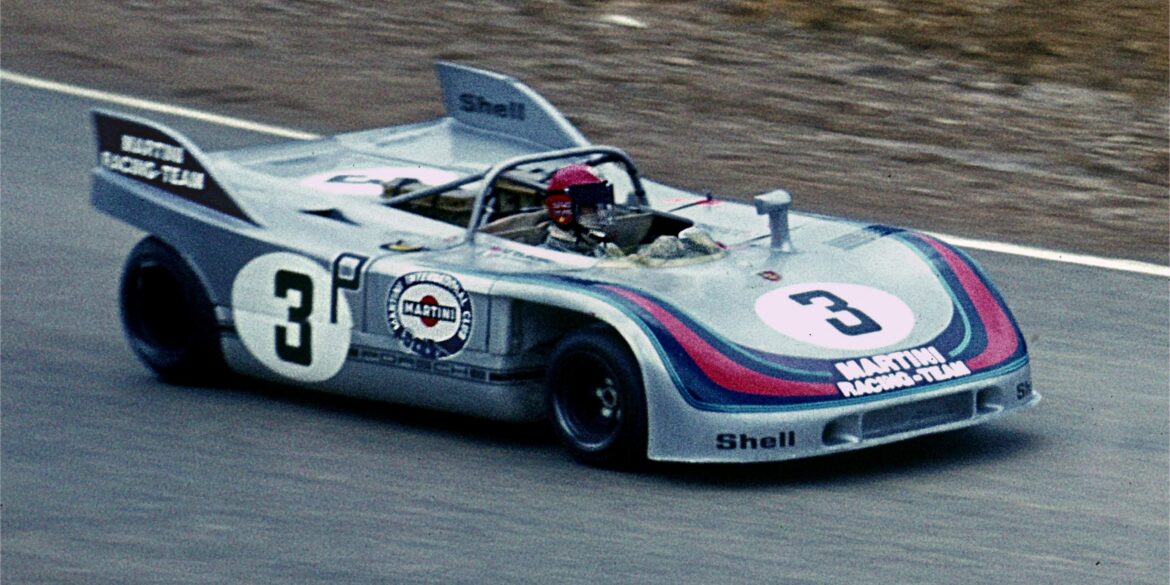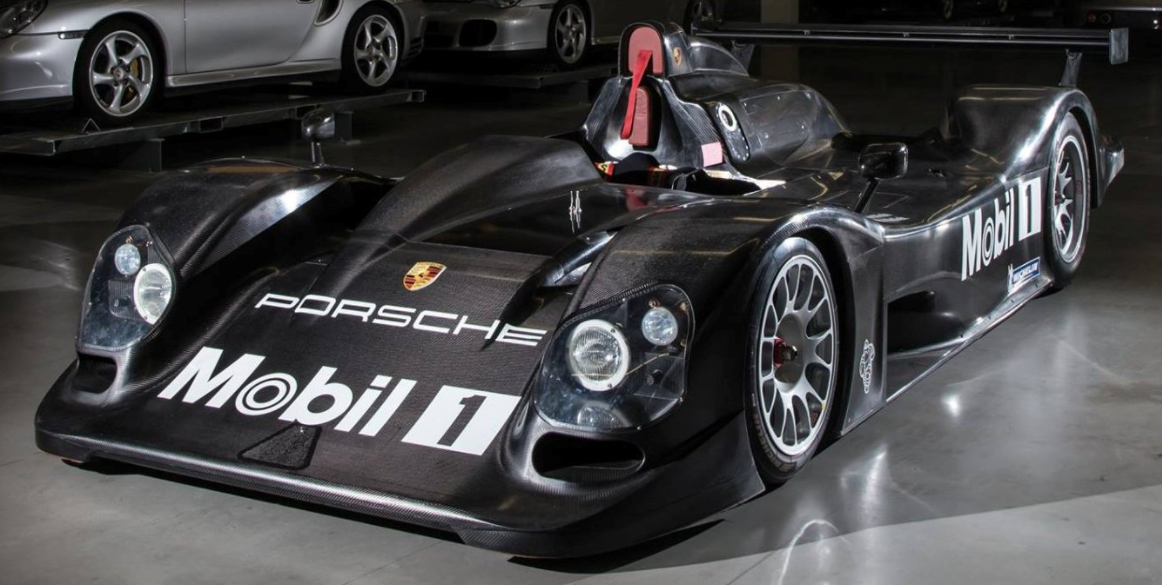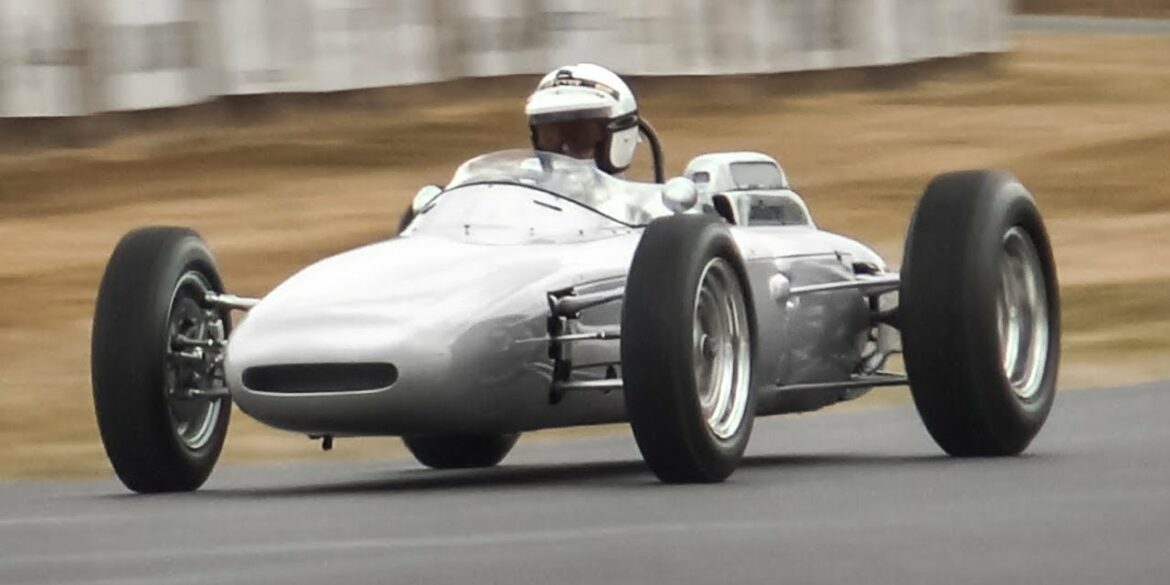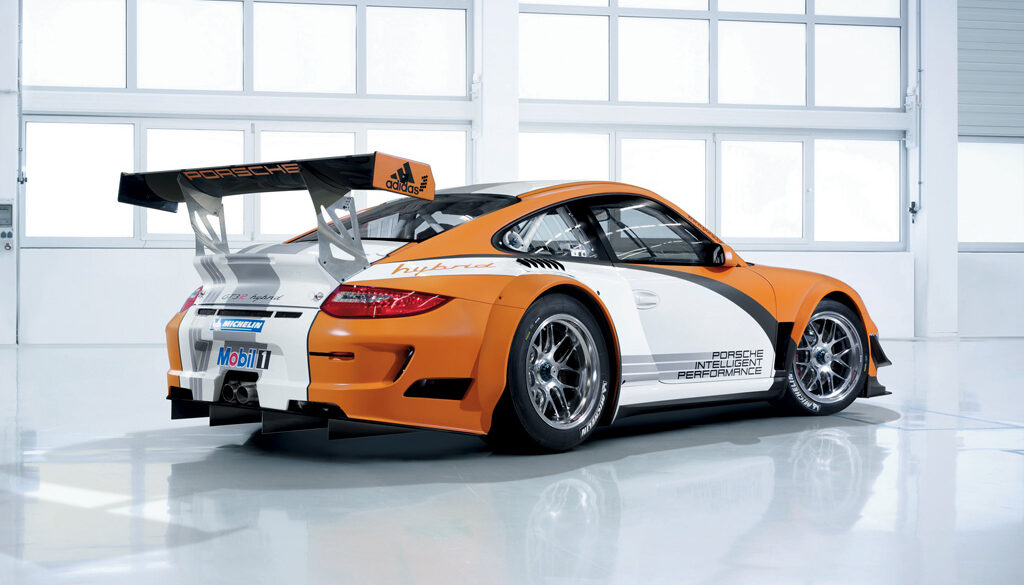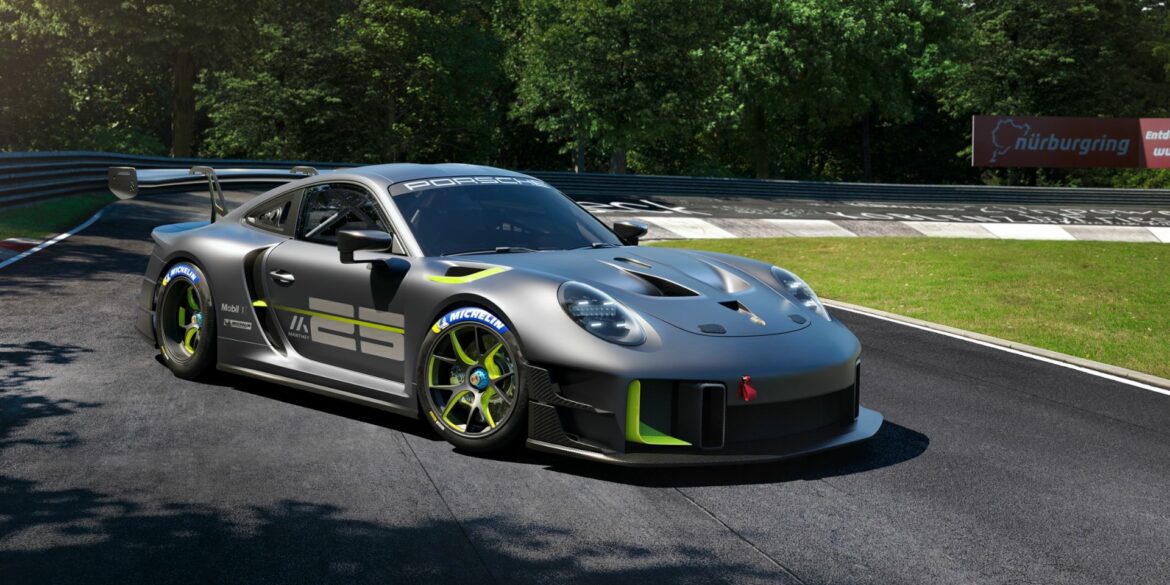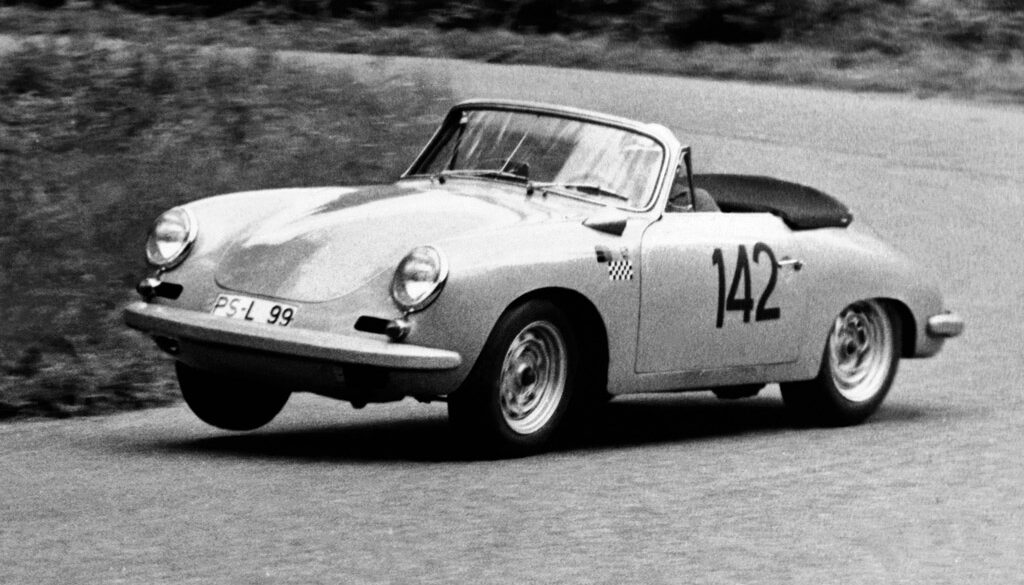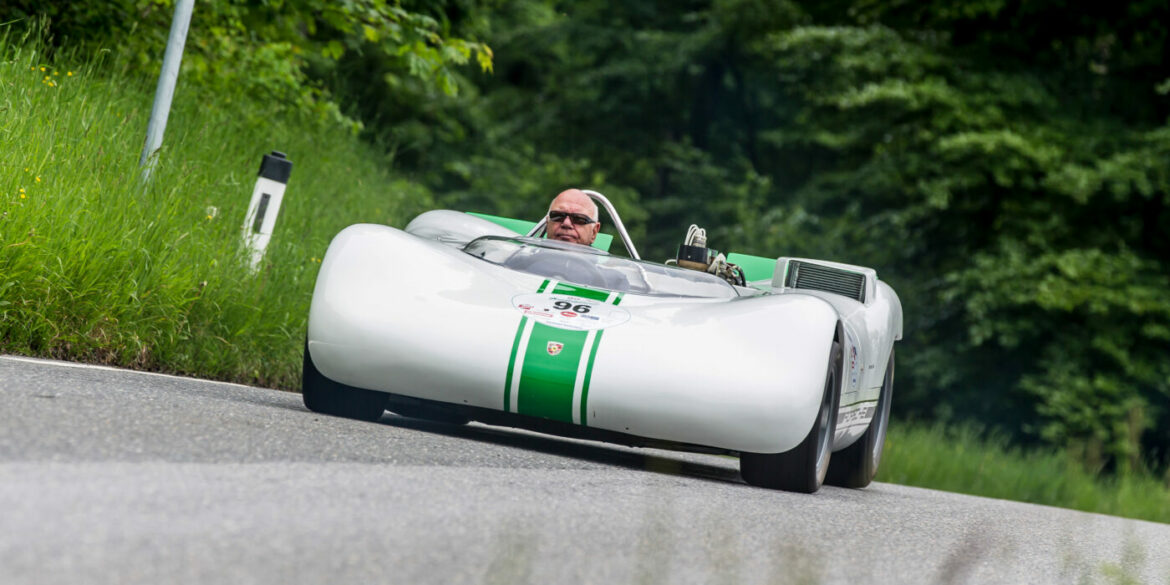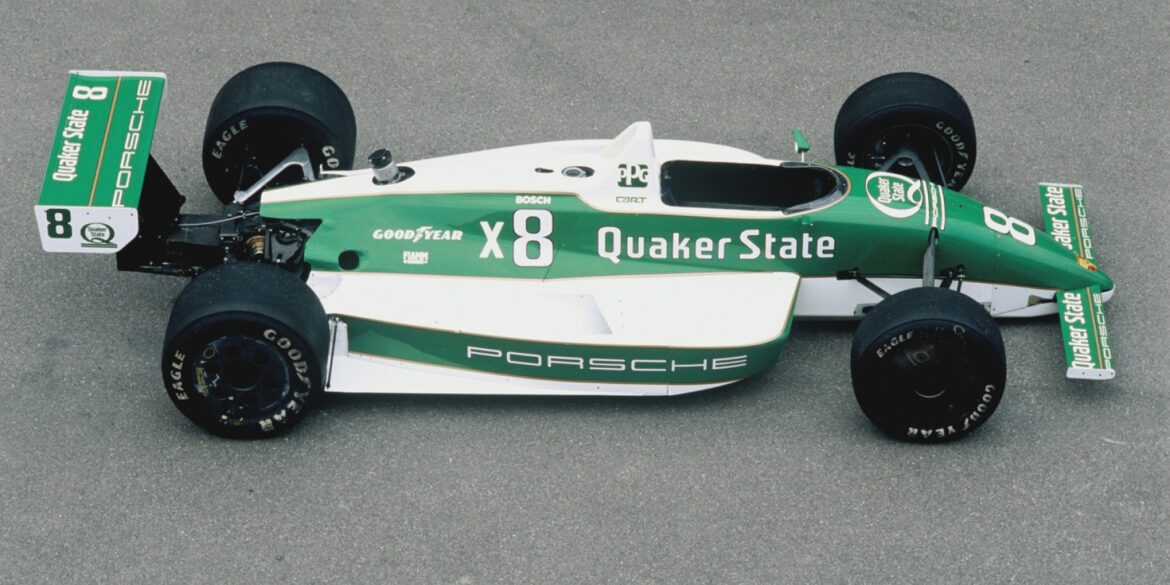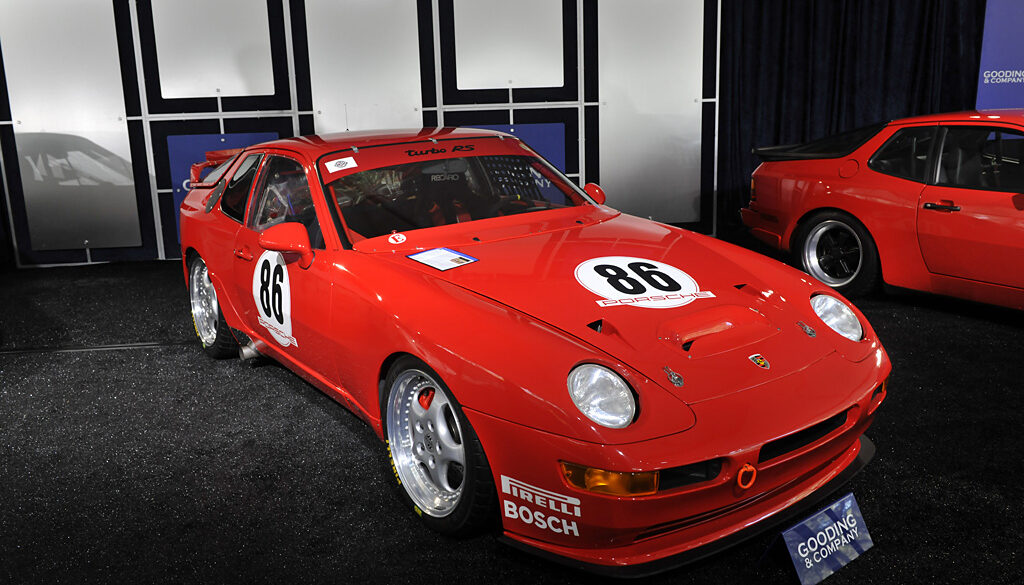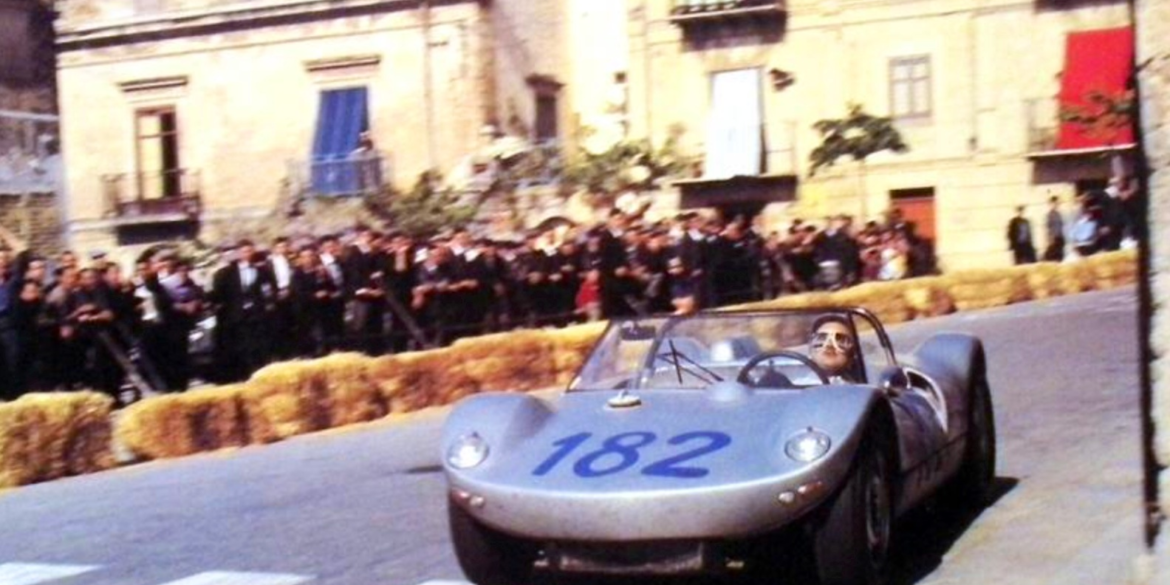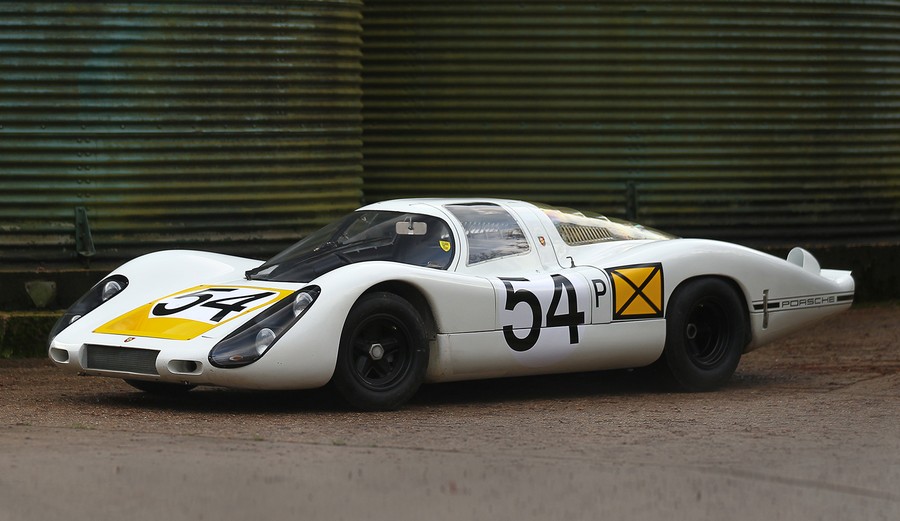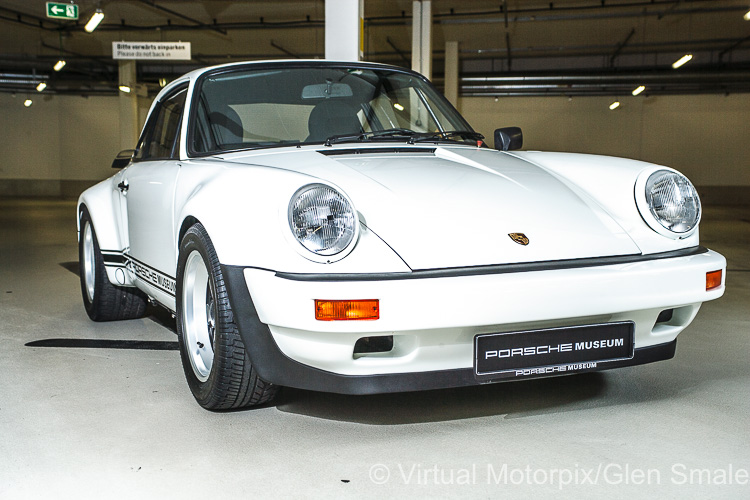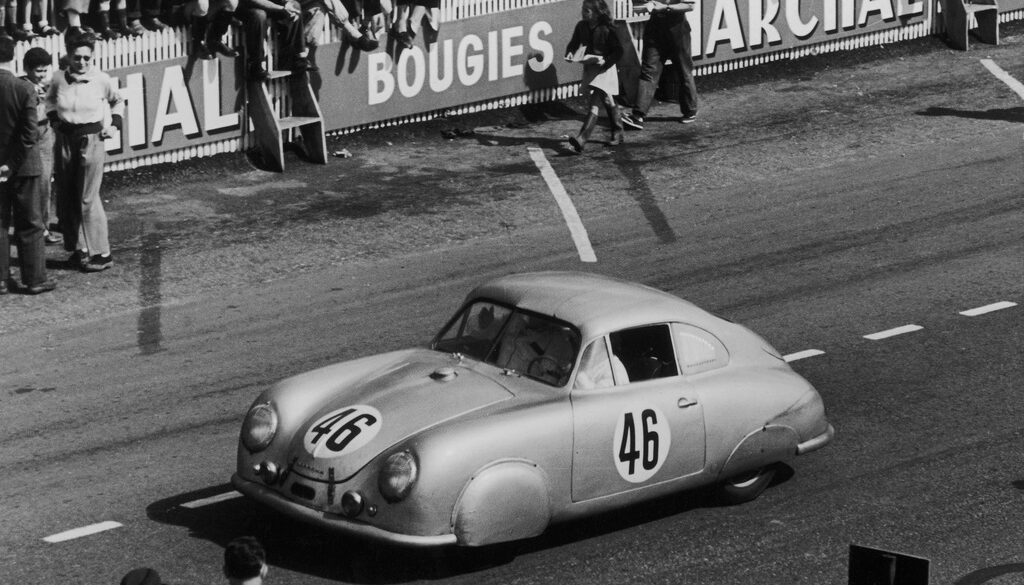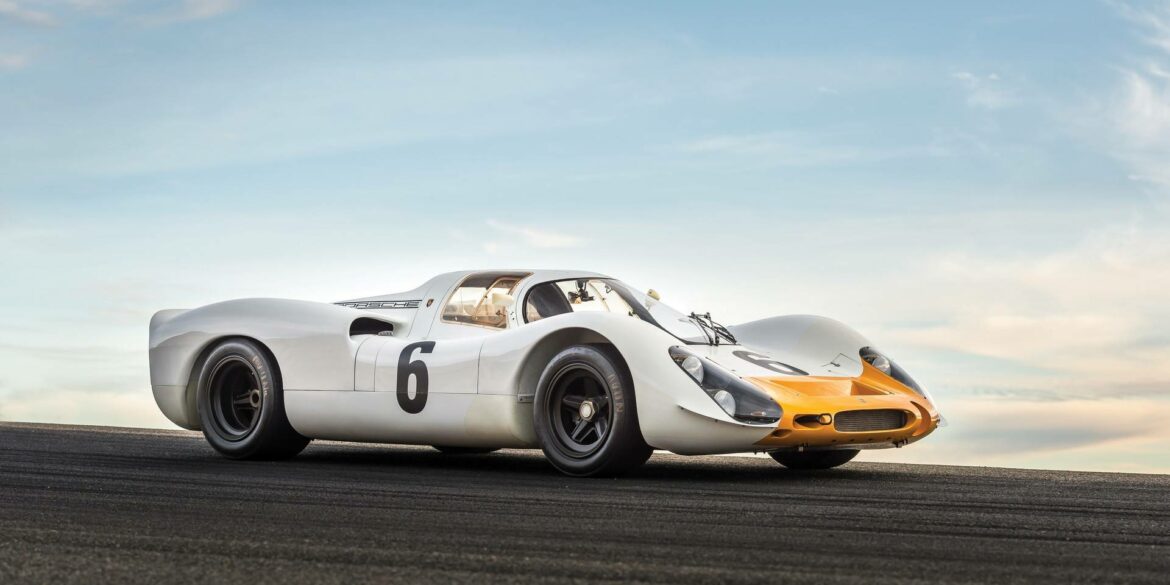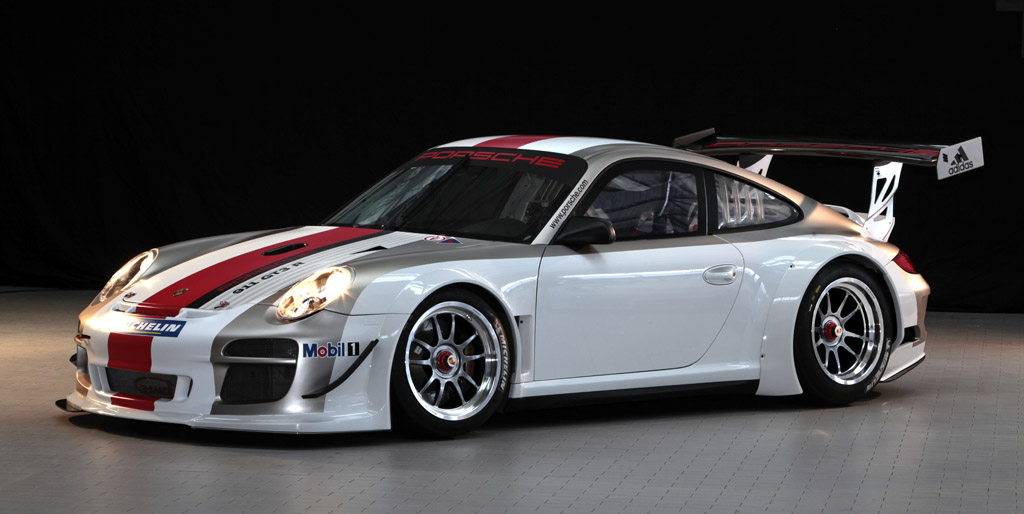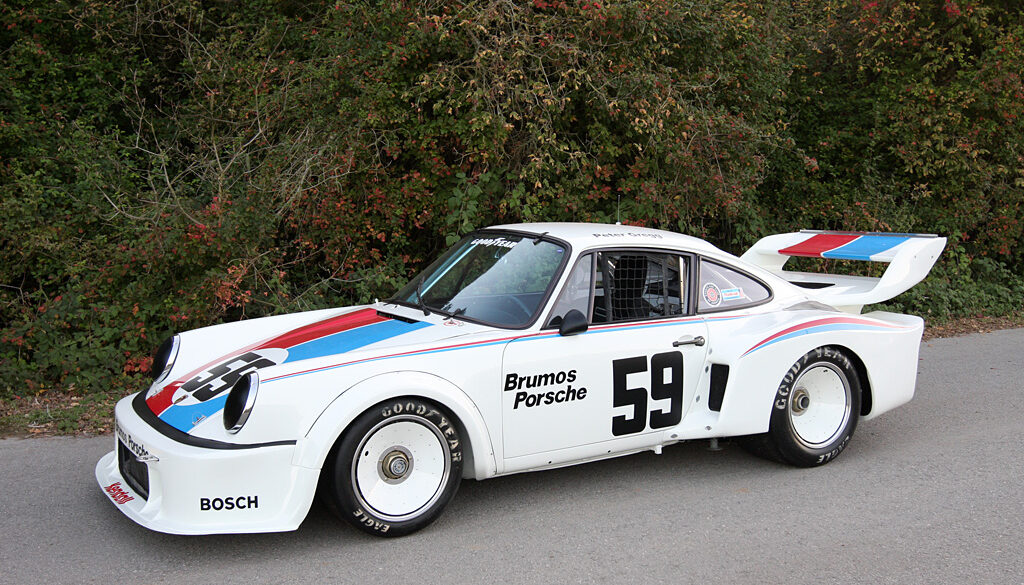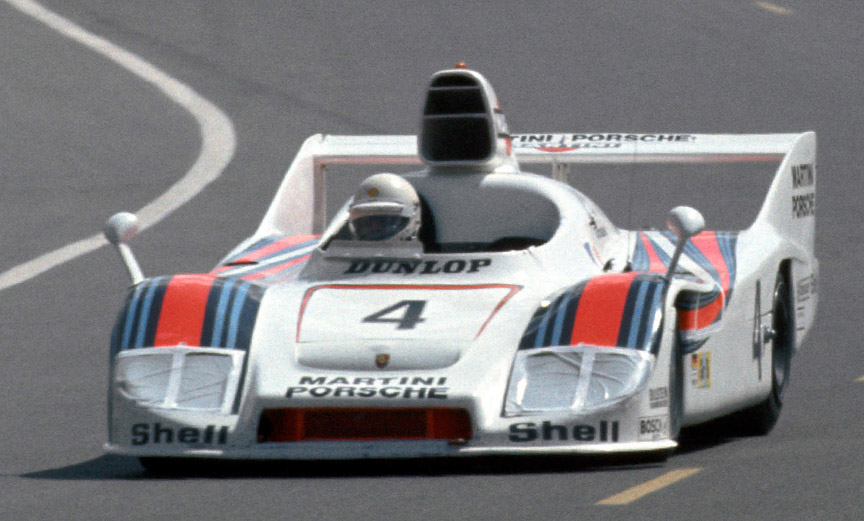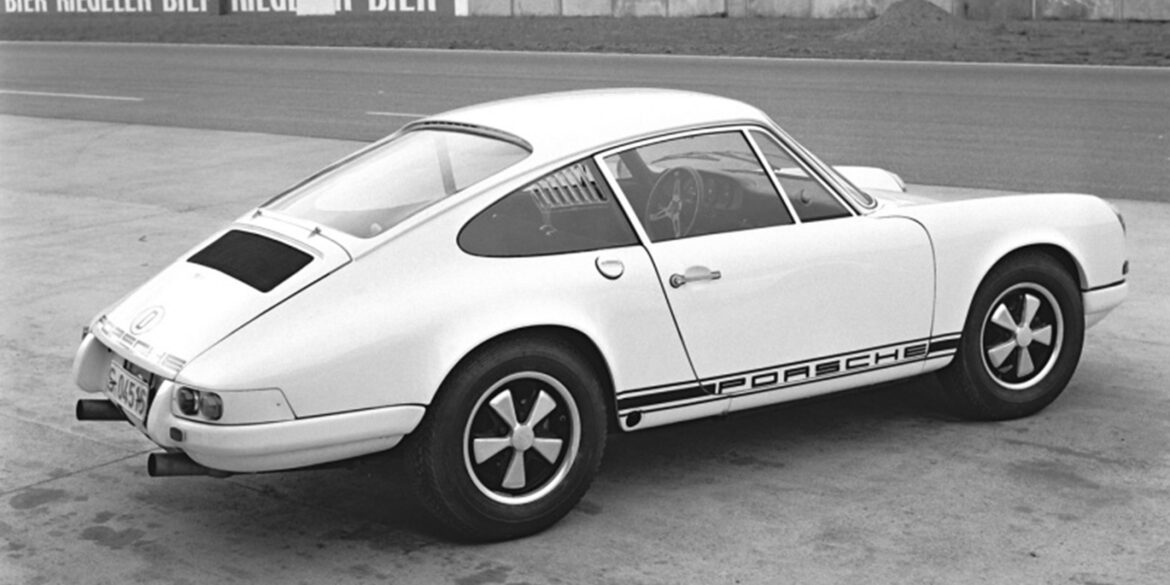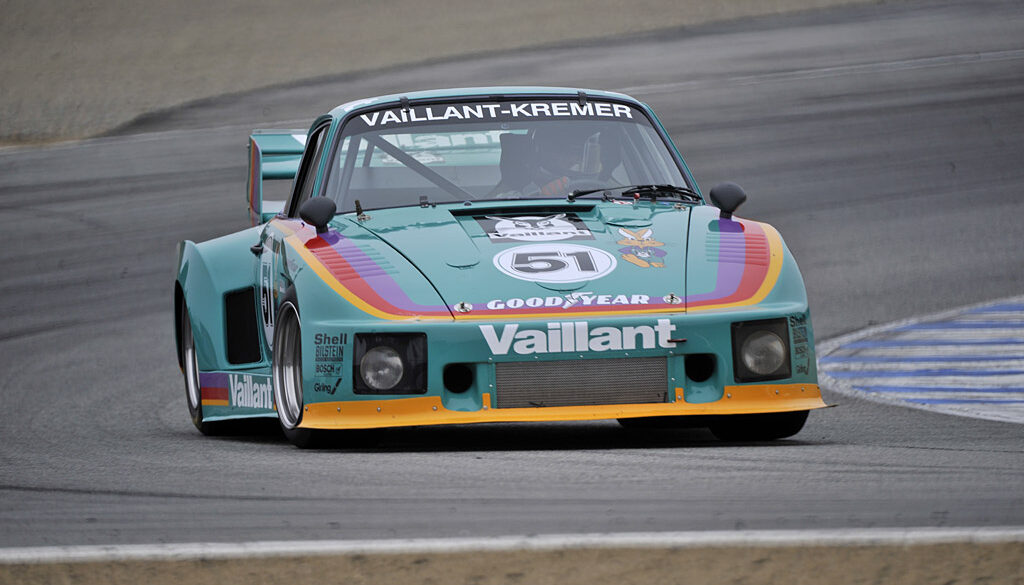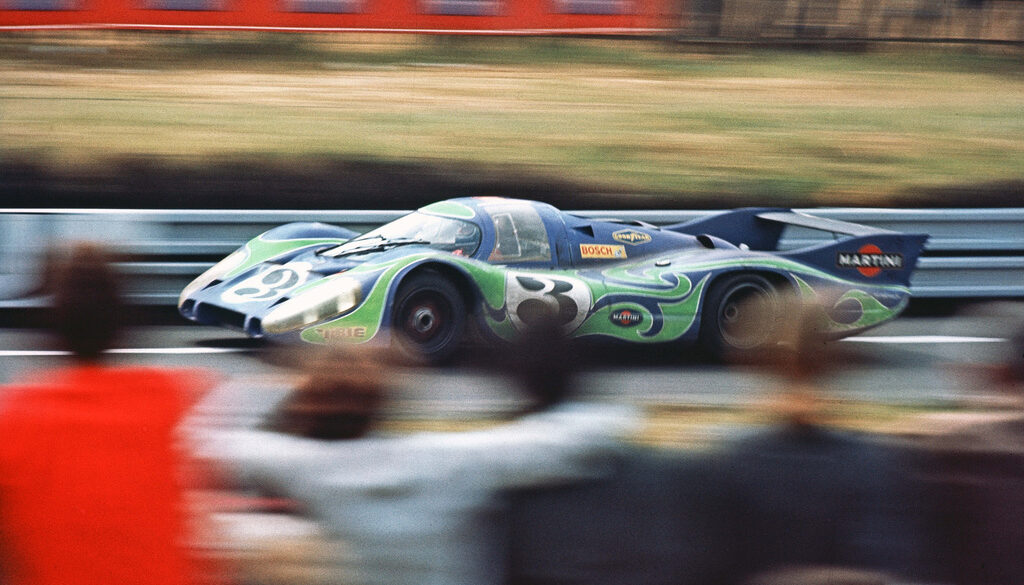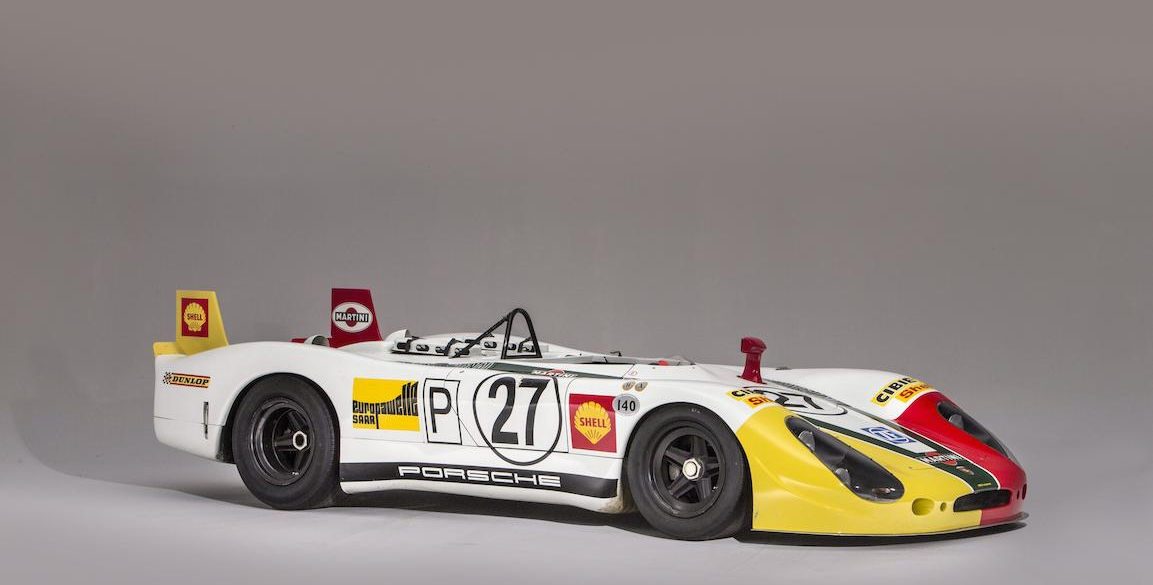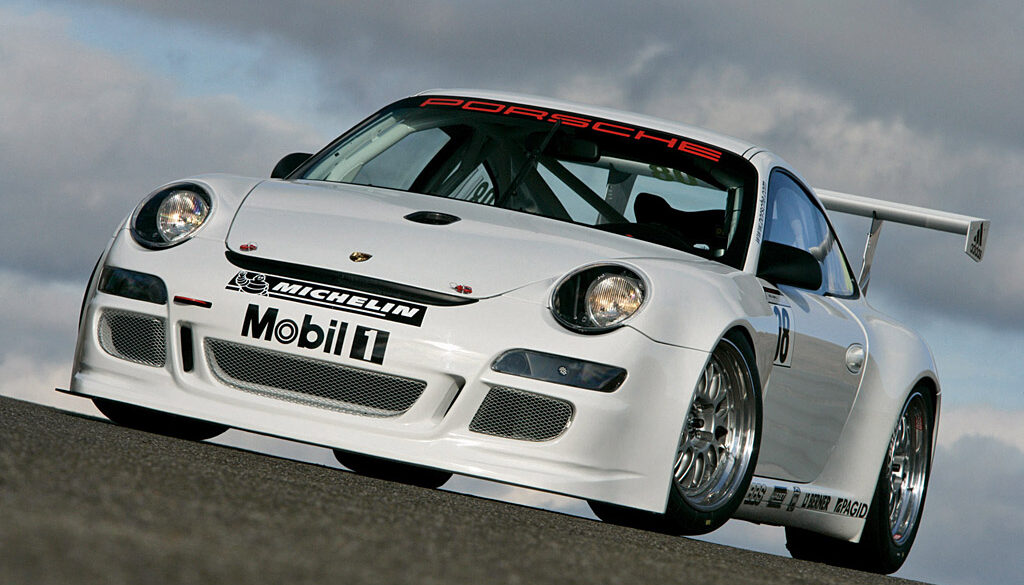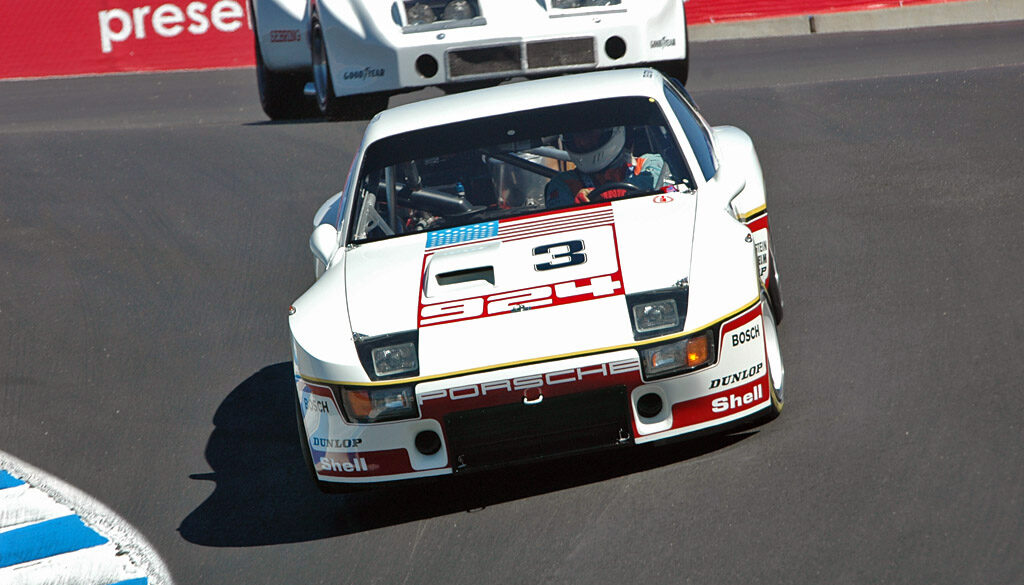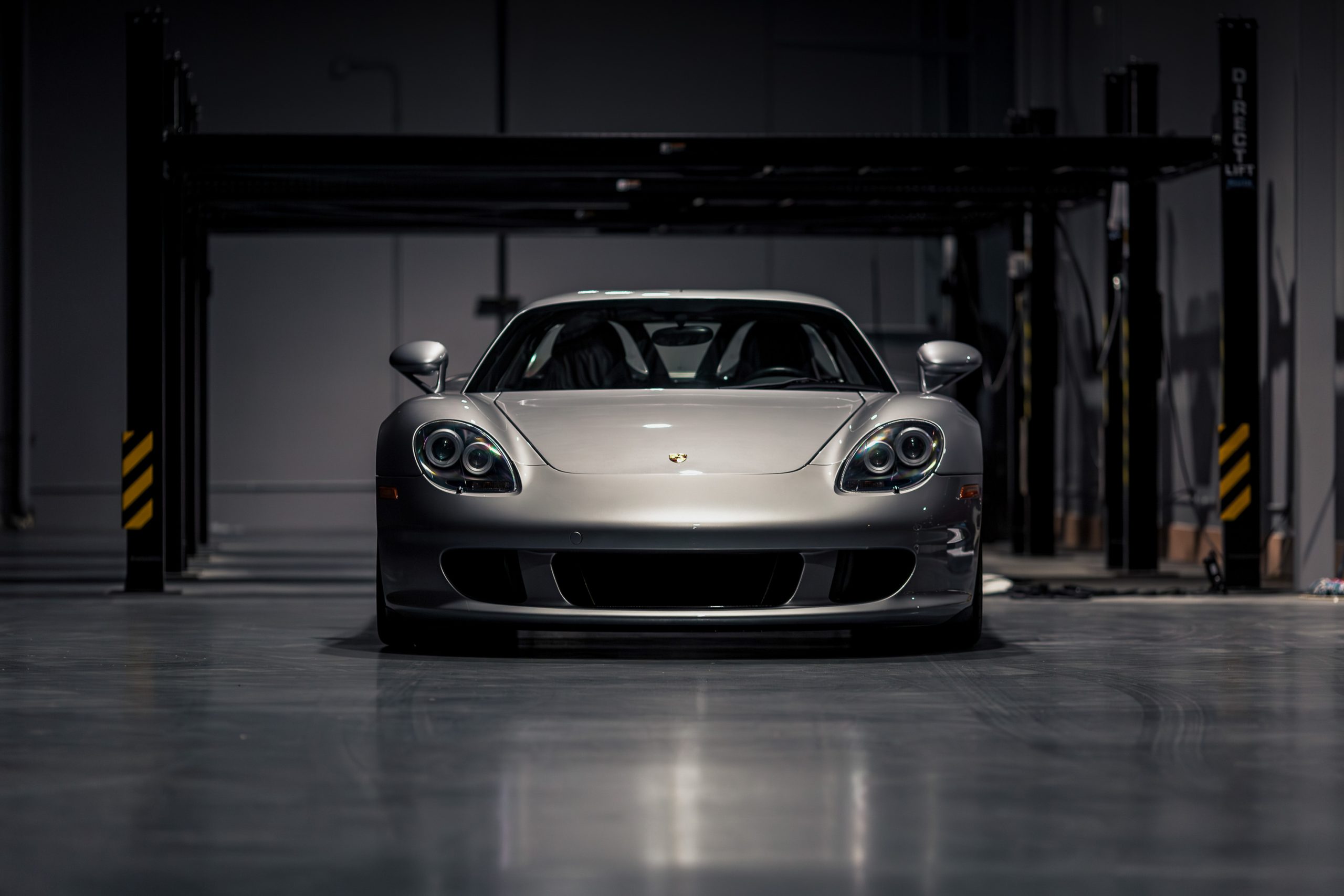The Cisitalia Grand Prix is a single-seater car for the postwar 1.5-litre supercharged Grand Prix class, built by Italian sports car manufacturer Cisitalia and introduced in 1949. It was designed on behalf of Cisitalia by Porsche between 1946–47, and is therefore also known by its Porsche project number, Typ 360. An extremely advanced design, it proved too complex to build for the small Italian firm (and lead to the financial downfall of the company).
For the 1960 season the FIA made changes to the regulation regarding the windscreen and cockpit size. These rules changes together with a larger (1.6-litre) Type 547/3 engine, developing 160 horsepower (120 kW) and a new double wishbone rear suspension brought about the RS 60 model. The RS 60 brought Porsche victory at the 1960 12 Hours of Sebring with a car driven by Hans Herrmann and Olivier Gendebien. 1960 also saw Porsche win the Targa Florio with Hans Herrmann being joined on the winner podium by Jo Bonnier and Graham Hill. z
The 996 GT3 R was a one-year-only (2000 model year) special of which only 63 were produced. The car took the basic GT3 bones and amplified it for motorsport. The Mezger engine produced over 400 horsepower, while factory-fitted adjustable shock absorbers gave better handling. Most notably, the GT3 R wore carbon-fiber bodywork meant for ultimate light weight in motorsport. The 996 GT3 R was introduced in 1999 as a replacement for the 993 RSR. Before its introduction, it was extensively tested at Weissach and Paul Ricard. In the 2000 FIA GT Championship, the 996 GT3 R was in the N-GT class and won every run. Won the 24-hour race at the Nürburgring.
Röhrl and Geistdörfer very nearly won that San Remo Rally, after a comeback that would have been one for the ages. Röhrl and Geistdörfer were up against a field of faster, more powerful four-wheel-drive cars in their rear-wheel-drive Porsche 911 SC, and somehow managed to pull within an eyelash of victory. Unfortunately, a broken driveshaft forced the pair to retire, leaving Michele Mouton's Audi Quattro to run away with the race.
As the rules do not permit higher output engines, the engine for the 991 RSR was taken from the 997 GT3 RSR 4.0 and the development work focused on the chassis, body, aerodynamics and the gearbox. A wishbone front suspension replaced the McPherson struts used in 997. A new development was the lightweight gearbox. One of the priorities in the development was the more evenly balanced weight distribution. The centre of gravity was lower, too.
In 1977 Kremer sufficiently improved the 935 to begin series production of their own version. It was the third Kremer built on Porsche's successful platform and many 935/934s were updated to reflect ideas from the brothers in Cologne. The K3 version of their 935 was a great success and won the 1979 24 Hours of Le Mans, 1980 Sebring 12 Hours outright.
For the 1974 racing season 911 Carrera RSR 3.0 (246 kW) and RSR Turbo 2.1 (338+ kW) were created - the 3.0L for the customer teams and the 2.1 turbo for Porsche’s own team. The Carrera RSR 3.0 was made in small numbers for racing. The 3.0 RSR would go on to become the most successful Group 4 racing car of its time thanks to its combination of low weight, immense Porsche 917 brakes, impeccable handling, and a 330+hp naturally aspirated flat-6.
The Group 4 racer based on the 911 Turbo (930) was called 934 and the Group 5 Porsche was called 935. The first version of the 935 looked similar to the 911 Carrera RSR. The first customers for 935 were Martini Racing and Kremer Racing. The Martini car was a full factory development, while Kremer made its own enhancements already before the first race. By 1977, the 935 was sold as a customer car for these series to race against cars like the BMW CSL.
With the 1993 Carrera 2 as the starting point, Porsche had to make at least 50 roadgoing cars in order to qualify this new model for the Carrera ADAC GT Cup, which served as the basis for a motor racing variant to come, the Carrera RSR 3.8. The RSR 3.8 was nothing short of an all-out race car that could be delivered to the track in a ‘just add driver’ form. The Porsche Carrera RSR 3.8 racked up a catalogue of impressive international race results right from the outset, winning overall at the Spa 24 Hours, Suzuka 1000km, and the 24 Hours of Interlagos.
Planned as a successor to the Porsche 550. A one off prototype was the 1956 super-light design utilising one of the spare 550 frames – 550-098 called ‘Mickey Maus’ which, with Richard von Frankenberg at the wheel, was reduced to a melted wreck that same year in a spectacular crash at the Avus race track. Known as Type 645, it was the beginnings of the new Type 718 Porsche with a shorter wheel base and unique suspension.
Based on the 911 GT3 RS production sports car, Porsche has designed a customer sport race car for GT3 series around the world: The 911 GT3 R. In developing the more than 368 kW (500 hp) racing nine-eleven, special attention was paid to lightweight design, better aerodynamic efficiency, reducing consumption, improved handling and optimised safety. The 911 GT3 R features the distinctive double-bubble roof, and the wheelbase which had been lengthened compared to the prior generation.
The Porsche 64, also known as the Type 64 and Type 60K10, is considered by many to be the first automobile from what was to become the Porsche company. The first KdF Berlin-Rome competition car, chassis number 38/41, was finished on August 19, 1939. It had a streamlined body and small 4-cylinder aircooled 1100 cc flat engine.
The Porsche 961 was the racing version of the 959 supercar. While the 959 rallye car was also internally called 961, publicly only the circuit racer was called 961. Only one 961 was built. It had 959 prototype chassis number which in turn was from the 1985 911 Turbo chassis number sequence: WP0ZZZ93ZFS010016. The 961 was entered at the 1986 Le Mans 24 hour race. Uncommonly, the 24 hour race was scheduled for May 31-June 1 that year, two weeks earlier of the typical Le Mans weekend in the middle of June.
The 1998 GT1 car was a totally rethink and vast upgrade versus the prior year car. 1998 Le Mans 24-hour race In the 1998 jubilee year, the Porsche team celebrated its 16th overall victory in Le Mans with a double win for the 911 GT1 98. On 6th/7th June, the winning car was driven by Laurent Aiello, Allan McNish and Stéphane Ortelli. It was almost 50 years to the day on which the first Porsche sports car saw the light of day.
As a top-secret project, the Porsche Museum workshop and the Porsche Heritage department worked on a special front-engined sports car from 1981. 40 years ago, starting on May 15, this car competed in the Deutsche Rallye-Meisterschaft (German Rally Championship). Behind the wheel was non other than Walter Röhrl, with Christian Geistdörfer next to him.
The technology in racing during the mid 60s was shifting from carburetors to fuel injection. Porsche began experimenting and the Bosch injection system proved to be the most reliable. Though the performance did not increase, it did provide superior throttle response over the Weber carburetors, and it was easier to tune. To compliment the new engine, a new body was created which reduced drag levels. Porsche dubbed the resulting car, with its new engine and body work, the 906E, with the 'E' representing 'Einspritzung, or injection.
In late 1985 Porsche developed the 944 “Weissach turbo cup race car” to provide amateur enthusiasts with a cost effective entry into motorsports. Porsche initially designed to participate in a single-marque racing series run in conjunction with 1986 German ADAC Supercup races, but soon spread to Italy, Spain, Belgium, Austria , USA, Canada and even Czechoslovakia. The cars were modified extensively for racing duties, including taking out a lot of weight.
The GT3 R has always been placed between the GT3 Cup and the very expensive RSR. All the 991.2 racing cars have normally aspirated 4-litre engines. Compared to the 991.1 GT3 R, the 991.2 GT3 R engine offers a broader usable rev range and the engine response is more precise due to 6 throttle butterflies. The roof, front hood and fairing, wheel arches, doors, side and tail sections, rear lid and interior trim are made of carbon-fibre reinforced plastic. Gets new double wishbone suspension.
The 935 tribute car was a non-street-legal collector's car built in a series of 77 cars. It was built from the 911 991.2 GT3 R racing car, fitted with the engine and transmission from the 911 991.2 GT2 RS street car and with the bodykit showing some design details from the 935 cars. The problem: it was not as powerful as the 1978 935 was with even smaller engine and the modern car is much heavier, so the power-to-weight ratio was almost 60% better 40 years earlier.
The Porsche 962 arrived on scene in 1984 as essentially a Porsche 956 for the IMSA/US market. A biturbo version was used in competition racing in Europe, while an IMSA version with a turbocharger featured in North America. The 962 C was based on the 956, with a 120 millimetre longer wheelbase and competed in LeMans. It differed from the IMSA version. The driver trio Stuck/Bell/Holbert was victorious at Le Mans in 1987. Porsche offered the 962 to privateers to race on their own and they were hugely successful.
Introduced in 1969, the three-litre 908/2 is an evolution of the Porsche 908K Coupe. As the rule book for the season no longer required a minimum windscreen height nor the requirement to run a spare wheel, Porsche opted for a much lighter Spyder body; which looked like a chopped version of the short-tail Coupe used in 1968. The Spyder body was perfectly suited for high downforce races like the Nürburgring 1000 km and the Targa Florio. It was also about 100 kg lighter than the Coupe.
The 935/78 was the ultimate expression of the 911 factory race car before Porsche officially withdrew from motor sport. Raced under the Group 5 silhouette series, great liberties were taken with the design and the result was nicknamed ‘Moby Dick’ for its large size and huge overhangs. The 935/78 was built under Porsche's Chief Racing by Norbert Singer for high speeds at Le Mans. Due to the advanced shape of the car 227 mph or 366 km/h was possible.
This car was officially called as the 911 GT2 RS Clubsport, but the name is rather misleading. The car was not built for the GT2 racing class which is long extinct and club sport has stood for Porsche club track days while this non-streel-legal car is a real racing car. Finally, the car was based on the 991 GT2 RS, which already had the Clubsport version. So, in order to understand what is what, we call it "991 GT2 RS Clubsport racing version". The 991 GT2 RS engine with 515 kW was powerful enough, so it was not tuned.
The 718 was a development of the successful Porsche 550A with improvements made to the body work and suspension. The car's full name is 718 RSK, where "RS" stands for RennSport (sports-racing) and the "K" reflects the shape of the car's revised torsion-bar suspension. It had a mid-engined layout and used the 142 horsepower (106 kW) 1.5-litre Type 547/3 quad-cam engine introduced in the 550A. There were several variations, including the RSK Mittellenker.
The 1961 Porsche RS was one of the last Spyders made by Porsche that used the potent 4-cam engine. It was a successor to the 1960 RS60 which was a highly developed version of the original 550 RS Spyder. These diminutive racecars excelled on the tighter courses like the Targa Florio which was first won by Porsche in 1956. That victory marked the first time a sports car with a midship engine had won a major motor sports event.
The Porsche 953 ranks as one of the finest off-roaders Porsche has ever made. It was basically a souped-up 911 designed specially to give Porsche an advantage in the 1984 Paris–Dakar Rally. Just a year later, it was replaced by the 959. Despite its brief run, it still managed to make quite the impression. Built around a massively enhanced suspension and a supremely powerful 300 bhp (224 kW), 6-cylinder engine, it showed Porsche knew more than just sportscars.
The 935/77 was a result of relaxed rules and the car got a completely new suspension. The mirrors were incorporated into the front fenders and the rear window had a new angle. The 935/77 was visually very pleasing. While the 935/76 had a single turbocharger, the 2.85-litre engine of the 935/77 had two turbochargers. There was also a "baby" 935/77 built with a smaller 1.4-litre turbocharged engine to compete in the national German DRM series under 2 liter class.
The final evolution of the 917 was created after Ferdinand Piëch had left the Porsche company in 1972. Two complete 917/30 Can-Am cars with 2500 mm (98.4") wheelbase were made for Roger Penske Enterprises racing team. They were chassis 917/30-002 and 003. The 001 car was not a real 917/30 and was raced in Europe at the Interserie. The Can-Am 917/30 had a 5.4-litre flat 12-cylinder twin-turbo engine which produced so much power that nobody really knew how much.
Porsche developed the S/T, of which 33 were built in 1970 and 1971, taking full advantage of new FIA rules allowing a two-inch wider track. Accordingly, wheel arches were widened to accommodate seven-inch front and nine-inch rear wheels. Weight reduction was even more radical, including thinner-gauge steel for the roof and floorpans. Heating ducts, seat slide supports, the glove-box lid, ashtray, sun visors and rear torsion-bar covers were deleted.
Four factory 906s received an air-cooled eight-cylinder boxer engine of the type 771, which was already used in the 904/8. The engine had a displacement of 2.2 liters with a compression of 10.2: 1 and vertical shafts that drove the two overhead camshafts per cylinder bank. The maximum output was 198 kW (270 hp) at 8600 rpm. All vehicles were equipped with a five-speed manual transmission of the type 906 and a ZF limited-slip differential . The gear ratios could be exchanged as required without removing the gear.
In 1982 Bob Akin Motor Racing commissioned spectacular Porsche 935 to be built for their Le Mans effort. It was built by Chuck Gaa of Gaaco to have a higher topspeed and increased performance. Chuck Gaa fitted a Lola T600 front end to a new bespoke bonded aluminum chassis. According to the regulations, the body retained the 930 roof structure, but was entirely new from the beltline down. The standard 3.2-liter Porsche engine was used and put out 750 bhp.
Porsche created the single-seat 718 RSK Mittellenker (center steering) to compete in Formula 2 racing. The body differed from the 718 2-seat sports racer only to accommodate the central driving position, with revised seat, steering, shifter and pedal placement, and the aerodynamic fairing behind the driver’s head moved from the left to the middle. Instead of having a full-width cockpit, the body sides were extended toward the center to create a space solely for the single driver, with a short, wrap-around windshield.
For race teams and track day customers Porsche prepared a small number of the 964 Cup cars according to the FIA NG-T regulations. Officially called the Competition model, these custom-ordered cars were an intermediary step between the Carrera Cup option (M001) and the standard tourer (M002). This M0003 option was available directly from Porsche as a road-going model. These cars had almost all the Carrera Cup modifications including the new suspension. This lowered the car by 40mm in the rear and 50mm in the front. It also included fitting of the larger 930 Turbo disc brakes and adjustable anti-roll bars.
One of the most confused of all Porsche is this DKS or Dreikantschaber. It might appear like a mid-engine RS61 Coupe, but it is a rebodied 356B with a rear-mounted engine. Unlike the earlier 356s, this one featured fared-in driving lights and cut-off greenhouse reminiscent of of the RS61 coupe. Porsche didn't give this new a car a name since it was homologated and considered a Carrera 2 by the FIA. It was nicknamed Dreikantschaber.
Using factory 935/78 ‘Moby Dick’ plans, Kremer built their own version. In doing so they modified the body to their own design to include more downforce. Only two cars were built in K4 specification. Bob Wollek drove the first car to win the Porsche Cup in 1981. Later this car was sold to John Fitzpatrick Racing and driven by John Fitzpatrick and David Hobbs to many successes in the IMSA series.
In 1953 Porsche created a series of 550 prototypes and 550-03 became the most important car in Porsche history by winning the 1954 Carrera Panamerica with Hans Herrmann at the wheel. This singular victory lent the Carrera nameplate to future models and also marked the first international victory of a mid-engine car. Only 15 prototypes were made until regular production began in 1954 of the Porsche RS Spyder.
In 1967 and 1968, the Porsche 910/8 Bergspyder was the dominant force before the 909 came along. Porsche’s 910 was essentially an updated 906 and were championship-winning machines thanks to being extremely nimble and well-suited to mountain roads. It had titanium (brake calipers), beryllium (brake discs), magnesium (wheels), electron (tank), plastic (body) and aluminium. The running gear was similar to that of a Formula 1 car, including an eight-cylinder boxer engine.
In the 2000 FIA GT Championship, the 996 GT3 R was the dominant racer in the new N-GT class and won every run. In the same year, the factory-supported Phoenix Racing won the 24-hour race at the Nürburgring. In 2001, the modified version, now called the 996 GT3 RS, was used. The vehicle was not only very successful in its class, it also achieved overall victories. Modelled on the 911 GT3 R, the GT3 RS race cars offered a number of technical improvements, which combine to ensure a racing car with optimal competitiveness. 50 racing cars were produced.
In spite of its 911 moniker, the car actually had very little in common with the 911 of the time, only sharing the front and rear headlamps with the production sports car. Designed and developed to compete in the GT1 class of sportscar racing, which also required a street-legal version for homologation purposes. It was powered by a twin-turbo flat 6 that was good for 600 bhp. The 1996 911 GT1 clocked at a top speed of exactly 330 km/h (205 mph) on the legendary Mulsanne Straight.
The Porsche Mobil 1 Supercup features the Porsche 911 GT3 Cup, the world’s best-selling race car. For this season, it’s the new generation. 510 hp, optimised intake manifold, electronic gearshift and power steering, fully digital cockpit, larger rear wing, and a double-wishbone front axle. This is a meaningfully upgraded race car. The new 911 GT3 Cup is taking on a great legacy. And it has already proven itself!
The 908/02 K Spyder and 908 K Flunder Spyder were basically the same cars with slightly different bodyworks. If you look at the non-Flunder Spyder, you see that the body drops after the front wheel arch and rises again before the rear wheel arch. In the Flunder version, this concavity doesn't exist. The difference between the two versions was mainly visual, no difference in racing use. The first competition the Flunder was entered, was the Nürburgring 1000 km on June 1, 1969.
Introduced in 1973, the RSR was a factory-built racing car based on the 911 chassis. The Porsche 911 Carrera RSR 2.8 was the first 911 to ever wear the RSR badge. Homologated for racing by the iconic 1973 Porsche 911 Carrera RS, the RSR’s racing career got off to the perfect start thanks to Brumos Racing’s overall triumph in the 1973 24 Hours of Daytona, while a factory car won the latest ever Targa Florio road race. For the privateer in the mid-1970s who wanted to go sports car racing this was the chosen weapon.
Although the longtail 917 was introduced first, it was meant only for the Le Mans. This meant, the short tail 917 K ("Kurz" in German for short) was raced first. The only engine available in 1969 was the 4.5-litre flat 12. The factory team enters one 917 K also for the Nürburgring 1000 km race, where it scores 8th. The factory team would not enter 917 K for racing anymore in the season, only private teams will.
The 917 Kurzheck Coupé (917K) first appeared in 1970 and contributed more to the Porsche 917 story than any other variant. It was a high-down force version that featured a cut-off tail for increased downforce. This reduced the cars top speed, as much as 30 mph. Le Mans winner 1970, Interserie winner 1970 and Manufacturers' World Championship for Porsche in 1970.
The story of the 718 coupé began in 1960 when a customer ordered a one-off design from Karosserie Wendler. The car was built on the Porsche 550 chassis. Front-end design came from the 718 Spyder. The roof and the rear end were unique creations by Wendler. For the Le Mans 24h race in June 1961, Porsche created two 718 RS 61 Coupés. They shared the side view silhouette of the Wendler coupé and the rear end of the 718 Spyder, but the front design was original to the car.
Following a development year with Penske Motorsports in ALMS, Porsche revealed the final version of their LMP2 contender for the 2007 season. Known as the 'EVO' model, it had a host of upgrades that made it suitable for customer-funded teams to successfully compete. This model dominated the P2 class at events like Le Mans and Sebring. It raced from 2007 till 2010 with strong results across the board.
These cars were designed by the factory to race in SCCA D Production Championship starting in 1979. The Porsche project number of these race cars was 933. Only 16 were built by the factory. However, if you had the right connections, you "could" buy the parts as a kit from Porsche to convert your street car into a fully race-ready 924.
In 2007, 2008 and 2009 American racing driver Carl Fausett took his specially prepared and supercharged 1978 Porsche 928 to the Pikes Peak International Hill Climb and competed in the Open Division. Fausett placed third in the Open Division in both 2007 and again in 2009, where he was also the fastest 2WD car. At that time, much of the race course was gravel.
In 1984 Porsche offered a full works-specification car known as the 956B. This provided the New-Man Joest Racing team with a winning formula and they dominated the 1985 24 Hours of Le Mans with a resounding victory. One of the main differences between the customer 956 and the 956B was the Bosch Motronic engine management. This allowed more precise ignition and injection which in turn provided better economy and more power.
With the car retiring after the 2017 LMP WEC season, the Porsche team decided to throw it a truly memorable send-off. Freed from any restrictions brought upon by strict regulations in the class it competed in, Porsche threw out the rulebook and established a new benchmark. Amongst the notable parting gifts was a significant horsepower bump, increasing the turbo V4 to 720 horsepower from 500 horsepower. Additionally, the electric motor received a 10% boost, now generating 440 horsepower. In total this gave the 919 a remarkable 1160 horsepower.
The 917/20 Turbo is a confusing car - its chassis number reads 917/30-001, but it is not the real 917/30. In its first race it was called as the 917/10 Turbo. Sharp eye can detect that it was not just the 917/10 Turbo, but an evolution of it. At the same time it was not the evolution of the 1971 Le Mans 917/20. Still, the car should not be called as the 917/30 to distinct it from the "real" 917/30 Can-Am racers and in 1974 it was decided to call it as the 917/20 Turbo.
The Porsche LMP1-H (Le Mans Prototype Class 1, Hybrid) race car featured a hybrid system that consisted of a turbocharged 2.0V4 petrol engine at the rear axle and an electric motor at the front axle. The electric motor/generator unit (MGU) collected the energy from the front axle under braking and the AER exhaust energy recovery system operated on the exhaust gas - a separate turbocharger ran an alternator.
The Porsche 787 is a Formula One (F1) racing car built and raced by Porsche for one year in 1961. The first car (a prototype) was created from the experimental Porsche F2 car with chassis number 718/2-05. The 1961 Porsche 787 was the first Porsche with fuel injection, 6-speed transmission and coil springs in all corners. Only two 787s, serial numbers 78701 and 78702, were ever built. Due to their lack of power and poor handling it was retired.
The 993 Carrera Cup 3.8 was developed from the 993 Carrera RS, as purpose-built competition car designed by Porsche for its single-model racing series taking place around the world. Replacing the 964 Carrera Cup, the 993 Carrera Cup had a claimed 315 bhp on tap, weighed only 1,100kg, and offered a top speed of around 270km/h (170mph). Approximately 216 samples were built. The Carrera Cup should not be confused witth the Carrera RSR, or the 993 Carrera RS Clubsport version.
The 550A was based on Porsche’s first purpose-built racing car, the mid-engined RS 550 Spyder. Appearing at the end of 1956, the 550A differed from its predecessor by use of a full tube spaceframe with several rear supportive cross-members, rather than the heavier welded-up sheet steel internal structure of the 550. The rear swing axles of the 550 were replaced by a new low-pivot arrangement that made handling much more predictable.
In keeping with FIA regulations, Porsche created a new lightweight 356 with help from Abarth. After Porsche had considered numerous Italian companies to manufacture a lightweight 356 body, they settled on Abarth. Franco Scaglione penned the first initial drawings which attempted to reduce frontal area, overall height. Included was an adjustable scoop on the rear deck lid. Made entirely of aluminum, Abarth's body was smaller than the Reutter 356.
To a large extent, the 3.6-litre boxer engine is identical to the power unit used in the Porsche Mobil1 Supercup and the international Carrera Cup championships. Power output has increased by 20 horsepower to now 440 hp (324 kW) at 8,000 rpm. Maximum torque is up by ten Nm to 430 at 7,250 revs per minute. The power increase results from optimised engine electronics and a modified exhaust system. In contrast to the GT3 Cup, the body of the Cup S is not based on the road-going GT3 but on the GT3 RS.
The Porsche WSC-95 (sometimes referred to as the TWR WSC-95) was a Le Mans Prototype originally built by Tom Walkinshaw Racing. It was modified by Porsche from the original Group C Jaguar XJR-14 from which it derived,[1] and run by Joest Racing. The WSC-95 saw very little race action even though it won the 24 Hours of Le Mans in both 1996 and 1997 without being acknowledged as a factory supported project. Later upgraded to the Porsche LMP1-98 before being retired. Only two cars were ever built.
Around 20 Super 90 Coupes were ordered with the lightweight GT package for racing. They used aluminum panels, a lightweight interior and plexiglas windows to shed over 200 lbs off the standard production coupe. Inside the car came equipped with a roll bar, leather-strap window lifts and speedster seats. Aluminum exterior panels included the doors, hood, rear deck lid.
Porsche 910 was the evolution of the 906 with Ferdinand Piëch as its main driving force and Hans Mezger as the head engineer. It came before 907, 908 and 909. Compared to the 906, the 910 had 13" Formula 1 wheels with central locking (906 had 15" 5-bolt wheels), more rounded design everywhere and the roof panel was removable. Because of the targa roof, the cool-looking gullwing doors of the 906 had to be forgotten.
Porsche decided to end its 20-year history of factory sports car racing and sold the 908/03 cars to customers. In 1975, some 908s were fitted with turbocharged engines, similar to those used in the Porsche 934 GT car. Several customer-908s were upgraded with 936-style bodywork. The Porsche 908/80 Turbo of Joest and Jacky Ickx which finished 2nd in the 1980 24 Hours of Le Mans turned out later to have a real Porsche 936 chassis, though.
The Group 6 Porsche 936 was the successor to the 908/03 and the turbocharged 917. While the 917 had a 5.4-litre flat-12 biturbo engine, the 936 got a 2.1-litre flat-6 single turbo engine. The reason for the 2.1-litre displacement was to fit inside the 3-litre class (turbocharged cars had a coefficient of 1.4). Despite the small capacity, the engine developed more than five hundred horsepower. Imagine such power in a ~700 kg/1540 lb car!
The 935 ‘Baby’, based on the successful 935 Group 5 race sports car, was created in 1977, after only four months of development,, specifically for entries in the small division (up to 2000cc) of the German Sports Racing Championship. Compared to the Group 5 car, this little 935 had a six cylinder turbo engine of 370bhp, reduced to a displacement of 1.4-litres. A thorough diet helped ‘Baby’ meet the minimum weight of 750kg as dictated by the rules.
In May of 1957, Porsche offered two distinct versions of the Carrera, one called the de Luxe for the street and this model, the Gran Turismo, for the track. The main difference between the two models was weight. The Carrera GT was a purpose-built car with little on board amenities. For instance, no heater was fitted giving the car its 'icebox' nickname. Furthermore, the interior was stripped of sound deadening, side windows were replaced by pull-up Perspex units and only simple door panels were fitted.
The rear of the world’s most-produced GT racing car now houses a 4-litre, six-cylinder flat engine for even more drive. Thanks to thoroughbred motorsport technology, the compact engine with direct fuel injection delivers peak performance of 357 kW (485 hp). A range of innovative details also improve efficiency in addition to engine performance, ensuring even better durability of the naturally aspirated engine in racing mode and reduced maintenance costs.
Three factory race cars were fitted with a flat eight-cylinder power plant derived from the 1962 804 F1 car, the 225 hp (168 kW) 1,962 cc (119.7 cu in) Type 771, which used 42 mm (1.7 in)-throat downdraft Weber carburetors. The Type 771s, however, suffered a "disturbing habit" of making their flywheels explode. The 904/8 cars had a short and relatively unlucky racing career.
The Porsche RS Spyder, internally called 9R6, exists only thanks to a customer order made in 2004 by Penske Motorsports, a subsidiary of Penske Racing. The 9R6 was built according to the Le Mans Prototype class 2 (LM P2) regulations and to be raced at the American Le Mans Series (ALMS) in USA and Canada. The ALMS was created in the spirit of the Le Mans endurance races, hence the name of the series.
The 959 took both first and second place in the 1986 Paris-Dakar rally. For 1986, the Dakar Porsches finally got all the upgrades from the 959 project, including the active four-wheel drive system offering four driving modes adjusted by the computers. This gave Porsche a 1-2 finish, with supporting 959 Dakar engineer Unger Kussmaul crossing the line at sixth. Once the champagne had dried up, Porsche deemed its Dakar program accomplished.
The chassis number 718-046 of a 1961 718 RS 61 Coupé was used for a new car called 718 GTR in 1962.. The Coupé version was developed from this RS 61 donor and was initially fitted with a 4-cylinder engine. This car was also upgraded to an 8-cylinder F1 derived engine which produced 210 horsepower (160 kW). The car was also fitted with disc brakes. A GTR Coupé driven Jo Bonnier and Carlo Maria Abate won the 1963 Targa Florio making it three wins at the event for a 718 car.
When Porsche went to Le Mans, they reverted to aluminum shells made at their first factory in Gmünd, Austria. Three of these coupes, called 356 SL, raced Le Mans. All three Le Mans cars were shipped to America by Max Hoffman and sold to Fritz Kosler, Ed Trego and John von Neumann for SCCA racing. Before the 1952 races at Torrey Pines, von Neumann had Emil Diedt remove the coupe's roof, creating in effect the first Carrera Speedster.
Although Porsche concentrated primarily on development of its twelve cylinder 917 from the middle of 1969, the eight cylinder 908 was also developed further. This 908 received a completely new tubular frame based on that of the 909 Bergspyder and its three liter engine was moved forward by mounting the gearbox ahead of the differential to achieve more equal weight distribution.
The fifth and the last of the 718/2 F2 cars, with chassis number 718/2-05 was an experimental formula racing car. It had the 718/2 chassis, but a different body. The car never got its own type number. It was a one-off car, continuous development project that later evolved into something that became the prototype for the 1961 Porsche 787 F1 car and then even for the 1962 Porsche 804 F1 car. 718/2-05, was first seen at the F2 race on Solitude race track near Stuttgart in July 1960.
One year before Porsche started production of the legendary RS Spyder, they experimented several unique 550 Prototypes. Two of these were fitted with removable hardtops that transformed the diminutive roadster into a sleek coupe. These were quite successful on faster circuits, but the roadster was later preferred as a more saleable car. The Coupes were retained by the factory to contest the Carrera Panamericana race.
The Porsche LMP2000 (also known as the Porsche 9R3) is a Le Mans Prototype racing car that was developed between 1998 and 2000, but never raced. One car was built, and it was designed around a modified version of Porsche's 3.5-litre V10 engine that was originally designed for Formula 1 in 1992. The project was canceled before the car was built, leading to various rumors about the reason for its demise.
The Porsche 804 was produced by Porsche to compete in Formula One (F1). It raced for a single season in 1962 in the 1½ litre formula. For 1962 Porsche developed an 8-cylinder engine for F1. It was air-cooled and had twin overhead camshafts, four Webber carburetors, and two valves per cylinder. Porsche stayed with carburetors and steel rims while other manufacturers had moved to lightweight wheels and fuel-injection.
During the Geneva Motor Show, a Porsche 911 GT3 R with innovative hybrid drive is making its debut. The innovative hybrid technology featured in the car has been developed especially for racing, standing out significantly in its configuration and components from conventional hybrid systems. In this case, electrical front axle drive with two electric motors developing 60 kW each supplements the 480-bhp four-litre flat-six at the rear of the 911 GT3 R Hybrid. Instead of batteries, an electrical flywheel power generator delivers energy to the electric motors.
Porsche will only build 30 examples of the Clubsport 25. Mechanically, it's similar to the regular GT2 RS Clubsport. It makes the 691 horsepower from a twin-turbocharged 3.8-liter flat-six. But it gets many, many changes to the exterior and even the cooling system. As you can clearly see, the body has been lengthened, and it has also been widened. The latter is necessary to house the wide, low-offset 18-inch wheels taken from the Porsche 935, though without the aerodynamic covers.
The racing sportscar is prepared by Porsche following the Le Mans GT2 regulations for the over 1,150 kg weight classification. It features a 3.6-litre engine with two turbo-chargers (KKK 24 with 33.8 mm restrictors), which delivers around 450 hp at 5,750 rpm. Even this racing vehicle, with its suspension featuring a McPherson front axle and Porsche multi-link rear axle with LSA system, closely resembles its production relative. Utilizing a steel 993 Twin Turbo chassis with modifications for racing, scored numerous victories in a wide variety of racing venues.
As with the earlier versions, the Carrera was offered both in a Carrera GT Deluxe version for the road and the Carrera GT for racetrack duties. Unlike these earlier models, the new car benefited from the 2.0 liter engine introduced as the Carrera 2 was unveiled in September 1962. The 2.0 Carrera used a variant of the Type 547 engine with a larger bore and stoke, having 1966cc.
The pinnacle for hillclimb racing was the mid-1960s and perhaps the most extreme machine of the era was the Porsche 909 Bergspyder. It took weight saving to the extreme. The 909 Bergspyder did not win a major event. It ended up being an awesome laboratory of ideas (not all worked). The 909 Bergspyder was based on the 910, but Piëch had tasked his team of engineers, including the legendary Peter Falk, to remove weight on every component.
Porsche again attempted to enter CART in 1987. This time it would be a full factory effort, chassis and all. The car had an aluminum-plastic monocoque chassis attached to a 2.6 Liter, 800hp V8. Information gained from their 1980 bid would be used to build the car. This was their first mistake. Indy had stepped up their game over that seven year span. The pole speed at Indy had advanced from 192 mph in 1980 to 215 mph in 1987. It was a different world.
In 1992, Porsche introduced the 968 Turbo RS racecar which it developed to compete in the new ADAC GT racing series in Germany. The car was based on the 968 coupe with limited lightening due to the regulations of the series which had a 4kg/bhp power/weight ratio limit. The car featured a K27 turbo boosting the 3.0 litre, 4 cylinder engine and an 8V head, similar to the 944 Turbo S, rather than using the 16V 968 head.
For the underpinnings of the new 904 Bergspyder, the Porsche engineers recycled five chassis originally laid down for a production version of the six-cylinder 904/6 Coupes. The steel platform chassis of the 904 was reinforced with cross-braces to compensate for the rigidity that had originally been provided by the coupe body. The Bergspyders were tried with both the exotic twin-cam eight-cylinder engine and a highly tuned flat six.
In 1967, Porsche brought a new kind of car to Le Mans. The 907 had a small flat-six and incredibly low bodywork, was aerodynamically optimized. Ford won Le Mans, but the 907 proved its worth. At the end of March, 1968, Porsche had four type 907 chassis ready, and brought them to the 24 Hours of Daytona. Fully developed, the 907 now used a 2195 cc aircooled, magnesium alloy flat-eight with Bosch fuel injection, good for 278 bhp at 8700 rpm. The 907LH (lang heck, or long tail) was slippery, stonking fast and wicked hard to drive. And it won.
Using the 930 Turbo as a basis, Porsche built the 934 for Group 4 GT racing. It replaced the outgoing Carrera RSR while winning GT Championships in Europe and performing very well in America for Trans Am. Porsche built the 934 from a standard 930 bodyshell and production rear spoiler, but almost nothing else was left alone. The suspension was converted to solid mounts and nylon bushings with adjustable anti-roll bars.
Built so that the factory Rothmans Porsche Rally Team could hit the international stage, the SC RS used the Turbo’s body with fibreglass bumpers and aluminium doors. In Autumn 1983, Porsche presents the 911 SC/RS for motor racing. The engine originates from the 911 SC, with improved performance achieved by the mechanical ball fuel injection, increased compression, the cylinder heads from the 935 and forged pistons. Racing seats are fitted in place of the standard seats.
Introduced in 1989 (the year of the 911’s 25th anniversary), the 964 Carrera 4 was a significant new model for the company, but the 4-wheel drive system was deemed unsuitable for the company’s racing series. Manufactured alongside the Carrera 4 at the same time was the more traditional rear-wheel drive Carrera 2, but this model’s launch was only planned for a year later, in the hope that it would not detract from potential sales of the Carrera 4. The 1990 season was the first season that saw the 911-based model become the pillar on which the Porsche Carrera Cup series has been established.
In 1950, eleven remaining Gmund chassis were assembled after the factory returned to Germany and converted to SL (Sport Leicht) racing specification. They received 1,086-cc engines, enlarged fuel tanks, louvered quarter-window covers, wheel spats, streamlined aluminum belly fairings, and a pedestal-mounted shifter. Three Type 356/2 cars raced at Le Mans in 1951; two crashed, but 356/2-063 performed flawlessly, winning the 1,100-cc class.
The Porsche 908/01 K Coupé was basically a 907 K with the new 3-litre flat-8. “K” in the designation stands for Kurz which is “short” in German, meaning the car had short-tail body compared to the 908 LH (“langheck”, long-tail). Although 907 and 908 were similar, there was a visual difference - the 907 had symmetrical front openings and the 908/01 K had asymmetrical. The 908/01 K debuted on May 19 at the Nürburgring 1000 km race and won it outright.
Porsche 963 LMDh – Reviews, Pricing, Specs & Buyers Guide Porsche’s first customer prototype in more than a decade comes with a $2.9 million price tag, making the 963 the most expensive model offered by the German auto manufacturer. Built by Canadian racecar constructor Multimatic, the LMP2-derived 963 chassis could become...
Following the Porsche 911 GT3 Cup, Porsche AG, Stuttgart, is entering yet another racing car in the 2010 motorsport season: The 911 GT3 R will be raced in series based on the international FIA GT3 regulations, thus succeeding the 911 GT3 Cup S. The main focus in developing this new model was on even better drivability and even easier handling. The 911 GT3 R is powered by a four-litre six-cylinder boxer engine delivering maximum output of 480 bhp (353 kW) transmitted to the rear axle by a sequential six-speed dog gearbox.
In 1967 Porsche prepared a small number of 934 Porsches with 935 Group 5 parts for the Trans-Am and IMSA GTO series. In the end, the 934/5 dominated the Trans-Am series by taking to top five positions in the championship. Ludwig Heimrath became the 1977 Trans-Am champion in his 934/5 by protesting Peter Gregg's highly modified car. Together they humbled the Corvette C3s and the Group 44 Jaguar XJS.
In 1977, Porsche returned to Le Mans with the 936/77. Its body was smaller, lower, shorter and further refined aerodynamically. The engine now featured two turbochargers and delivered 20 more horsepower. At one of the most dramatic races in history, Jacky Ickx, Jürgen Barth and Hurley Haywood slayed the armada of four Renault works cars and two factory-supported “Mirage” with Renault motors. In the year 1981, the 936 celebrated a sensational comeback with another overall Le Mans victory.
Based on the 911S, the 911 R was produced by Porsche to compete in the FIA’s GT 2.0 category. To make it competitive, the 911R was powered by a flat-six engine, Type 901/22 from the Porsche 906, capable of 210 hp. It went on a diet too, with weight savings coming from everywhere, getting the 911 R down to just 1,800 pounds dry. Four prototypes were constructed after which Porsche had coachbuilder Karl Baur build another 20 customer cars. In the end, because of the modifications to the 911R, the FIA refused to homologate the car.
Upon seeing the factory 935s and what was possible using the 930 platform, the Kremer bothers from Cologne built up their own version. Their first car contested the World Championship of Makes in 1976 and in the following year, an updated version known as the K2 was further modified. Compared to the Porsche 935, the Kremer version was much more slab sided and featured fences along the top of the rear fender to direct air to the rear wing.
With the aerodynamic instability of the 917 in the 1969, two separate configurations were used in 1970. These were the short-tail Kurzheck version and the less common Langheck or long-tail. Most of the 917's accolades were achieved by the 917 Kurzheck, leaving the Langheck a less popular, but ultimately just as potent contender.
The longer tail 908 Spyders were created only with the Flunder body - the body that's upper surface is almost flat between the axles - and not with the "normal" curvy Spyder body. Very few LH Flunders were created, both with 908/02 and 908/01 chassis numbers. 908 LH Flunder Spyder was first used at the 1969 Le Mans 24h race by Jo Siffert and Brian Redman, but they had to retire because of the gearbox failure. The only excellent result was 3rda at the 1970 Le Mans.
The Porsche 997 GT3 Cup was a series of race cars created by Porsche to enter the Fédération Internationale de l’Automobile (FIA) Group GT3 racing class. Replacing the 996 GT3 Cup, the 997 Cup's 3.6 litre engine is rated at 294 kW (400 PS; 394 hp) and was mated to a six-speed sequential transmission. In 2009, the GT3 Cup received several 997.2 updates including a new 3.8 litre engine with an output of 331 kW (450 PS; 444 hp).
In 1981 Porsche developed two 944 prototypes to succeed the 924 GTPs which raced the 1980 24 Hours of Le Mans. To coincide with the release of the 944 in fall of 1981, Porsche prepared a GTP version to promote the car before the launch. The GTP was equipped with a special Type 949 cylinder block with dry sump lubrication, KKK K28 turbocharger and an air-to-air intercooler.
GTP cars were produced in 1980, three of which were special LeMans race cars. The cars had the 2.0L turbocharged 924 engine with a huge front-mounted intercooler and increased boost to increase output to 320 HP and 285 lbs/ft of torque. The engine used Bosch mechanical fuel injection and with a weight of 2050 pounds had a top speed of 180 mph. It was third in the GTP class, with an 6th place finish overall, and another finished fifth in class and 12th overall.


